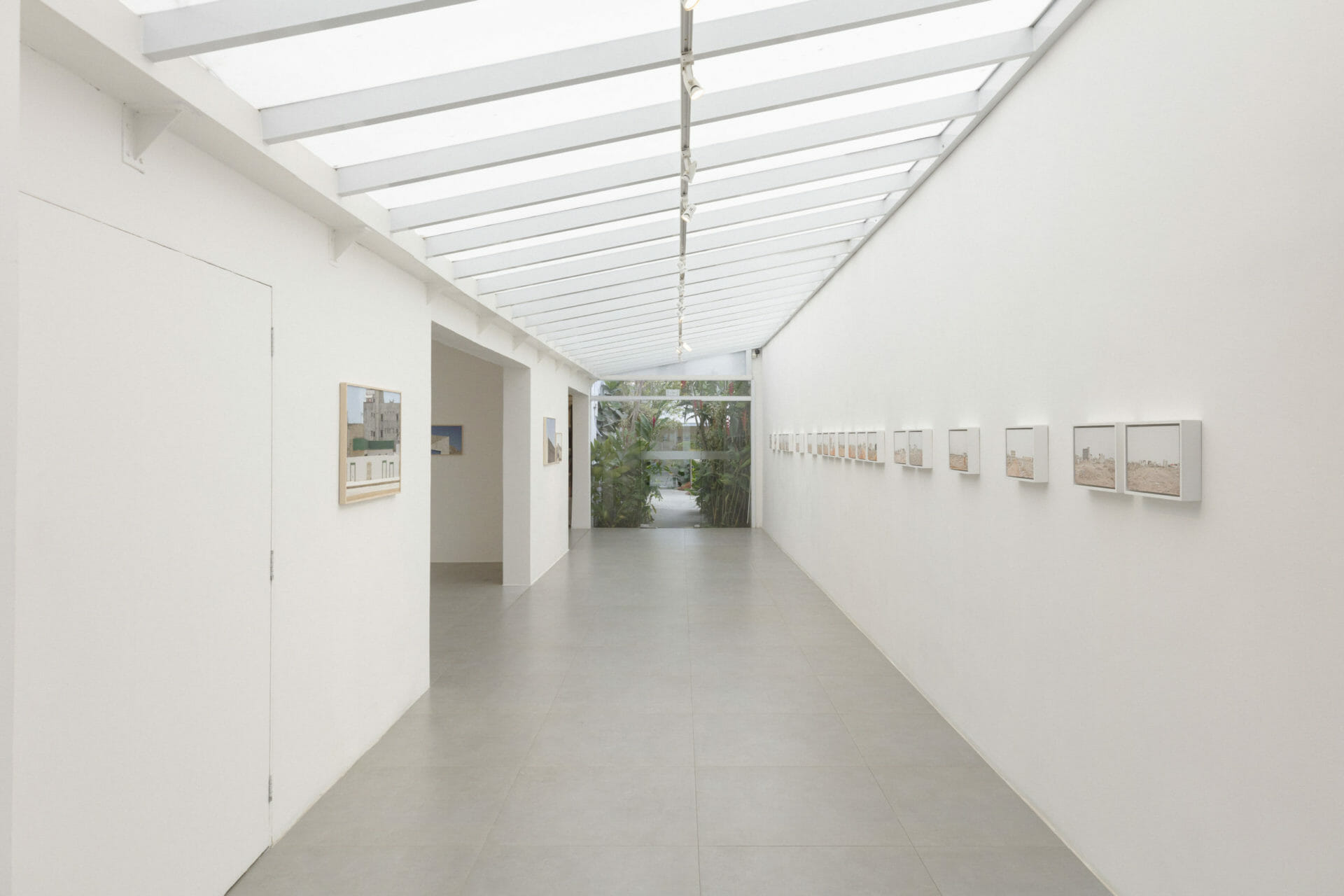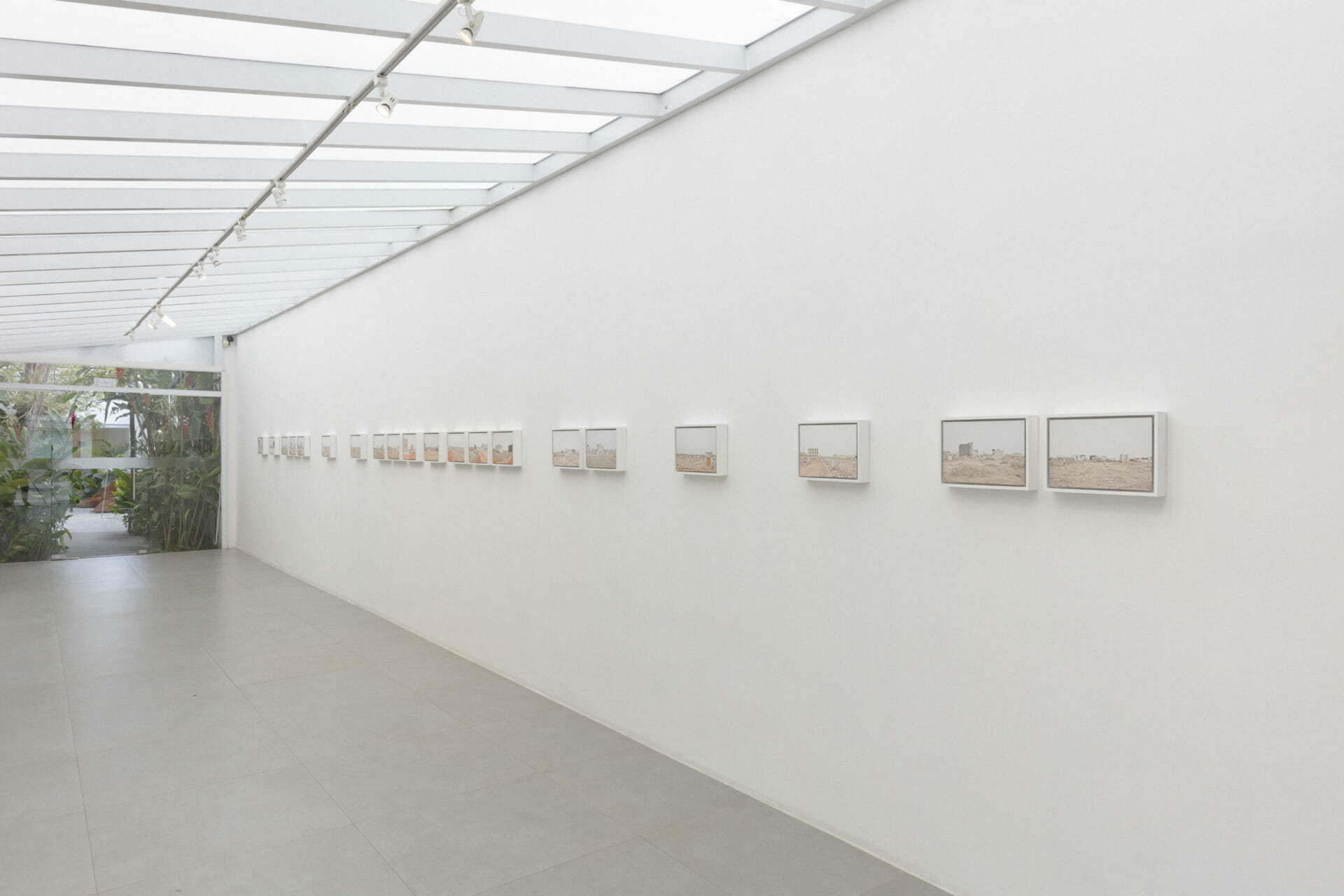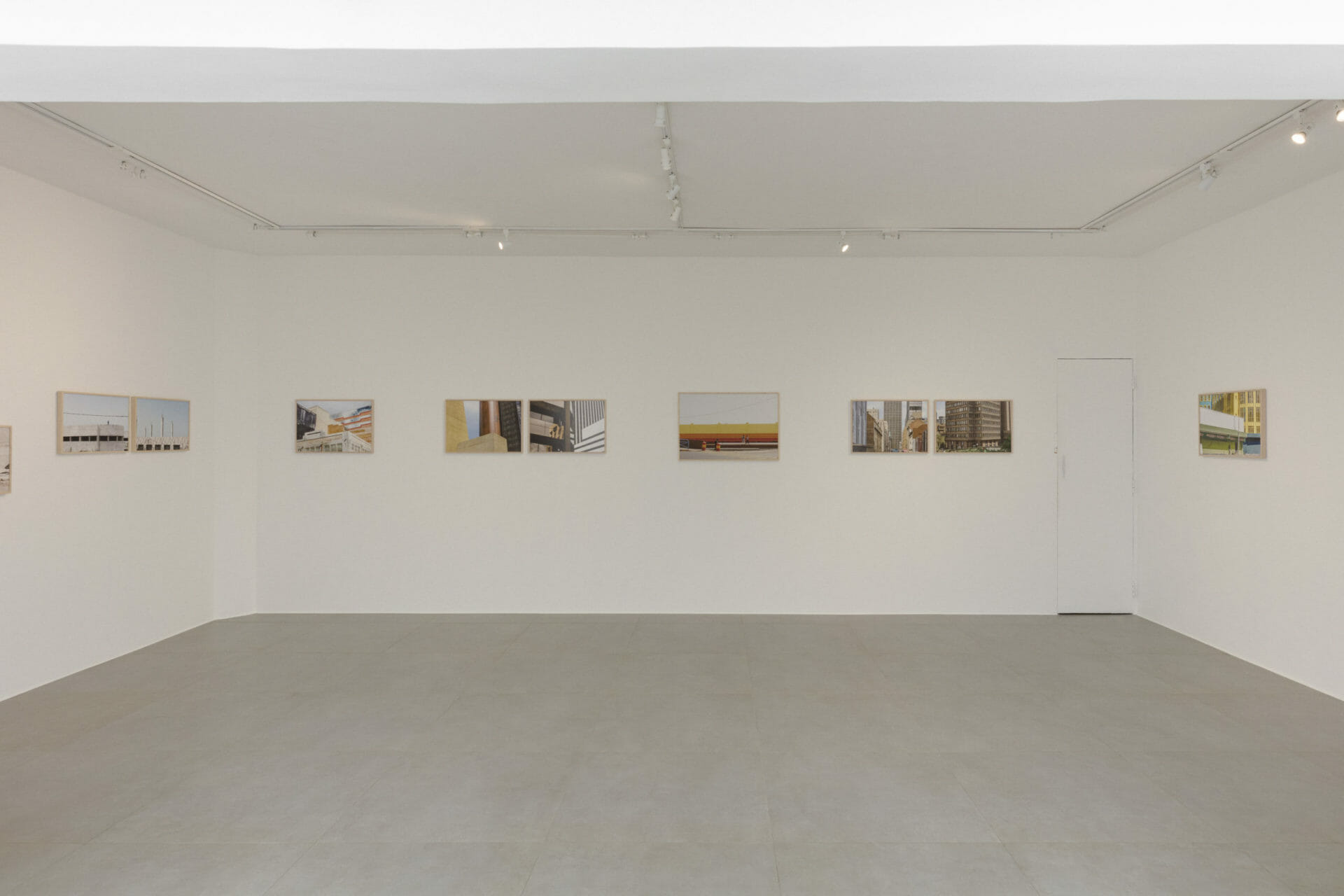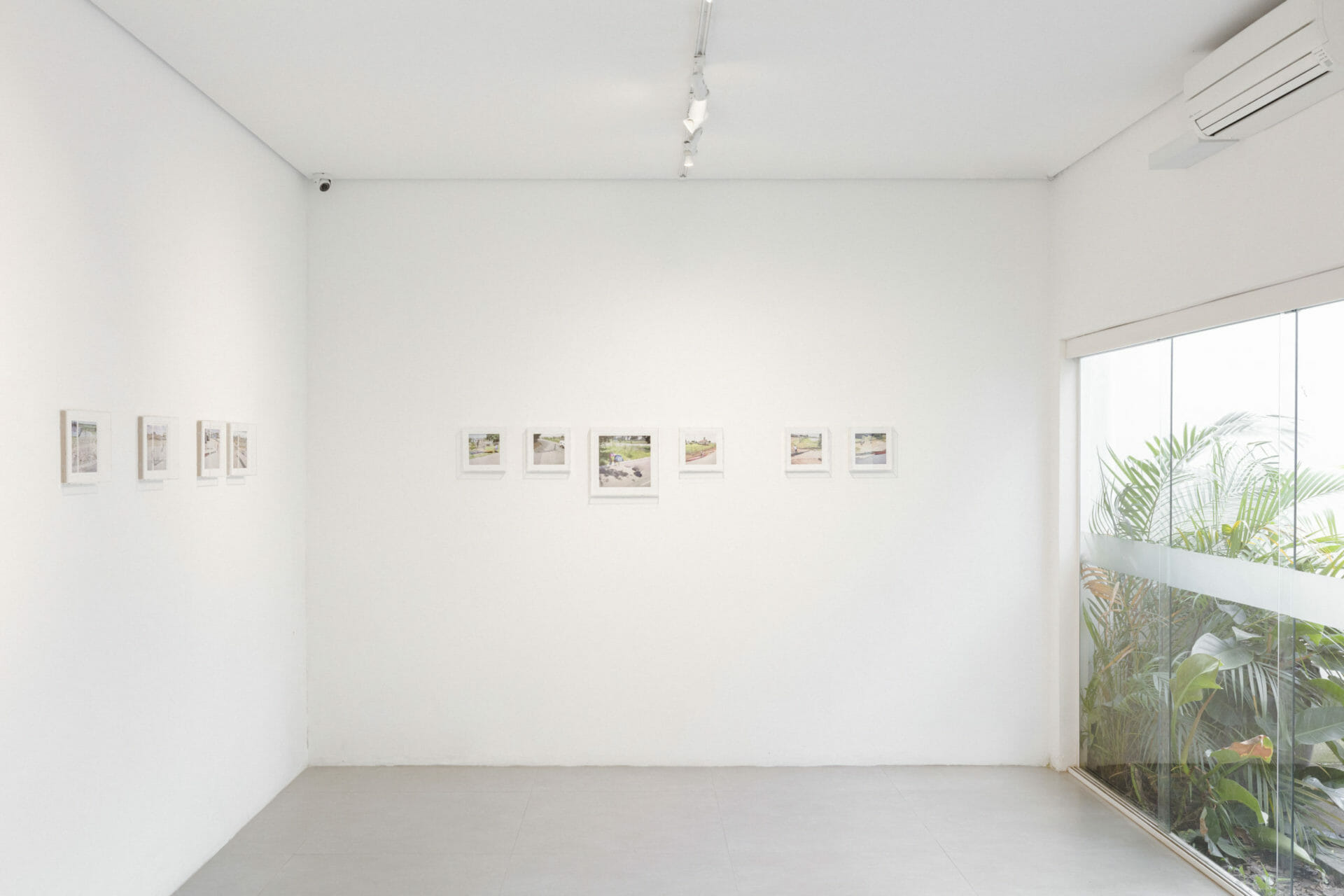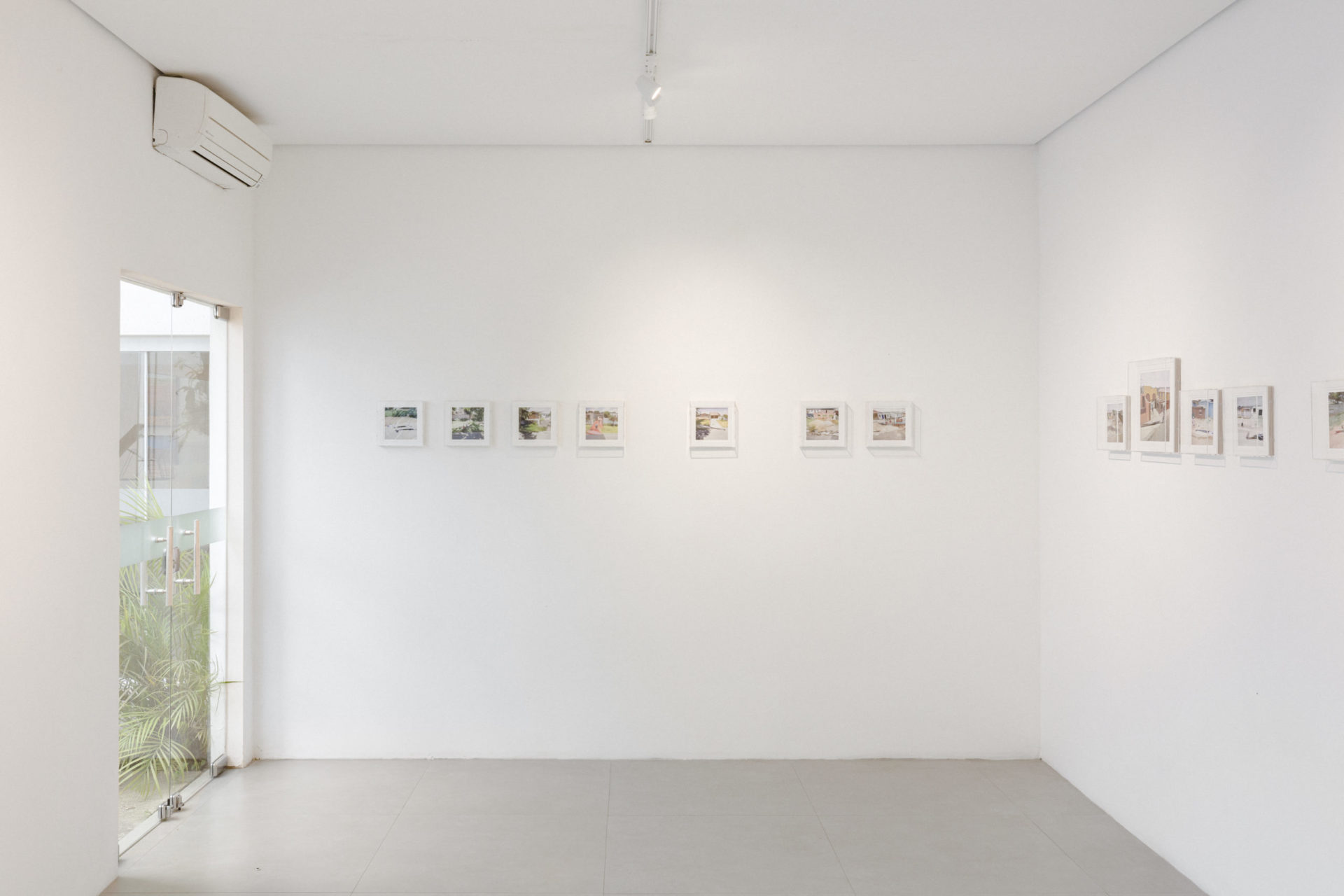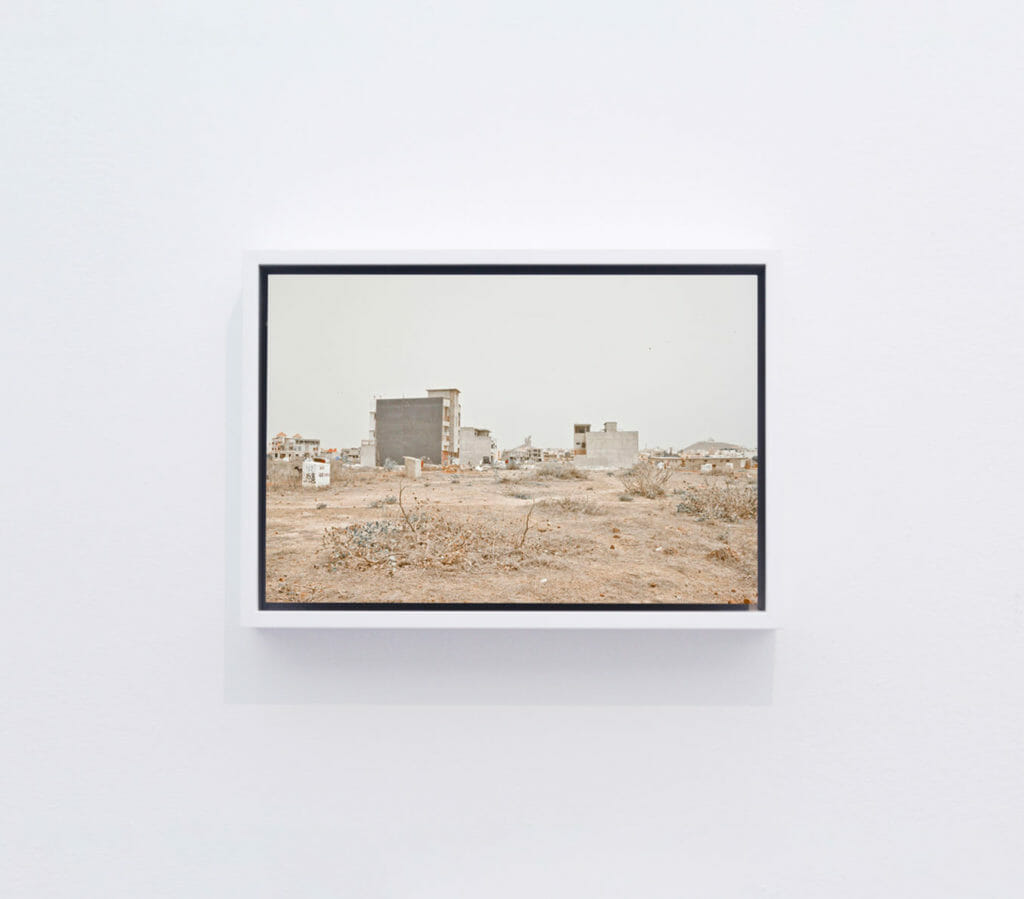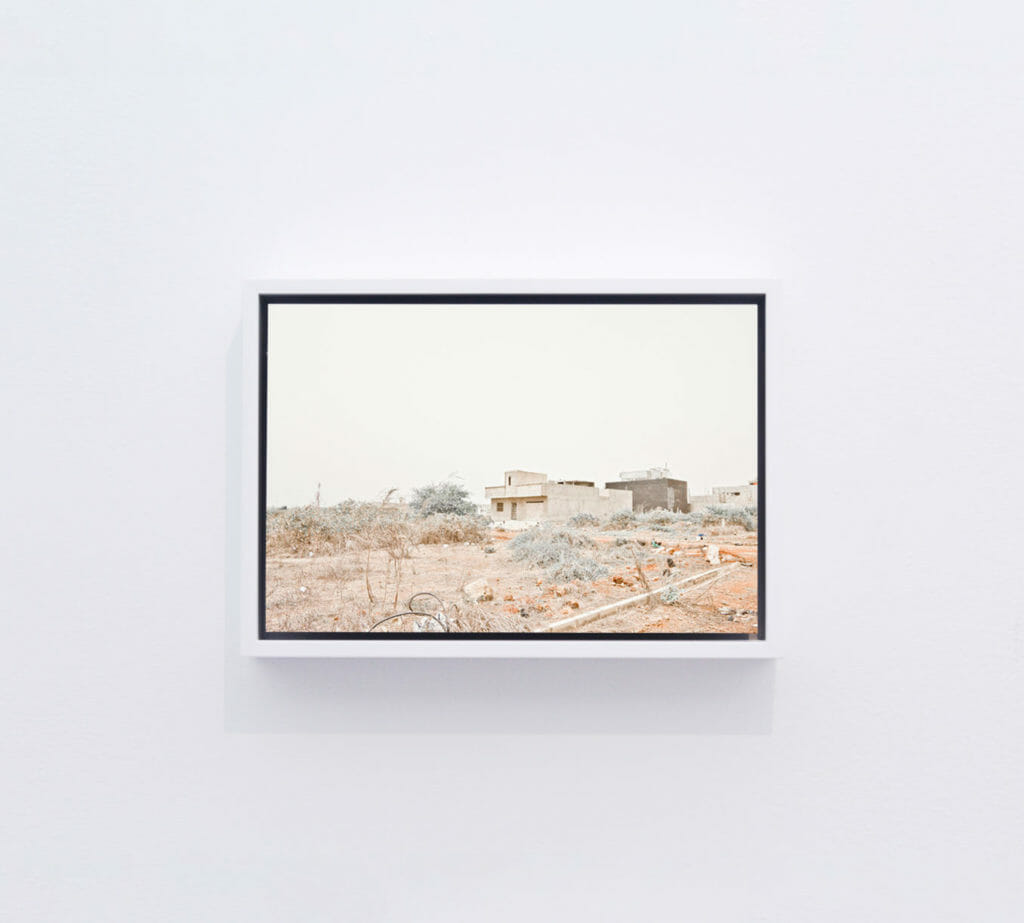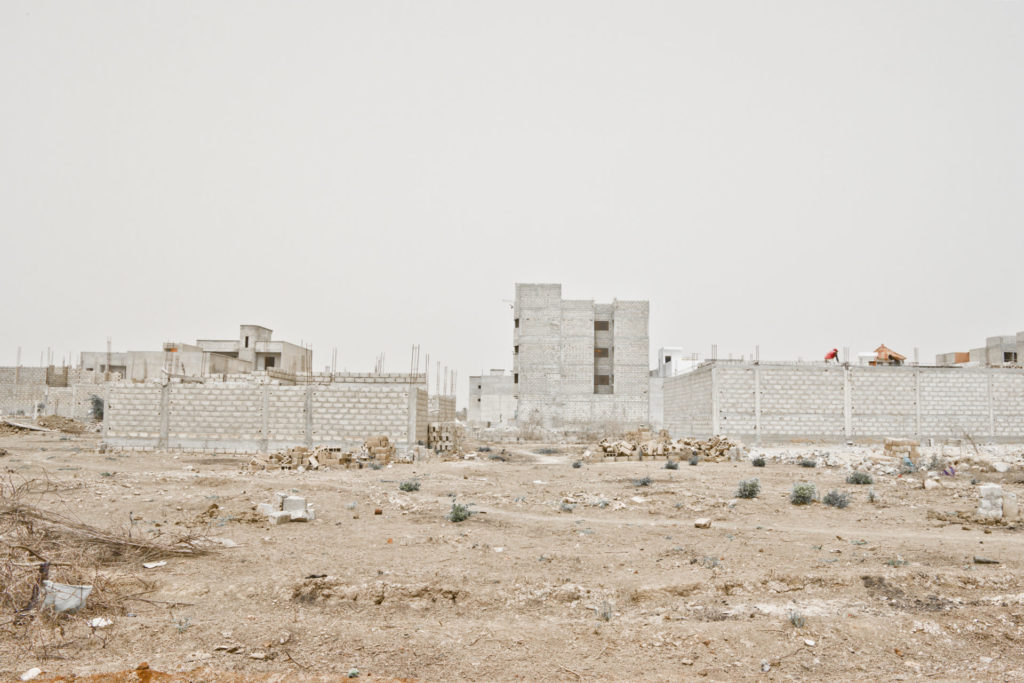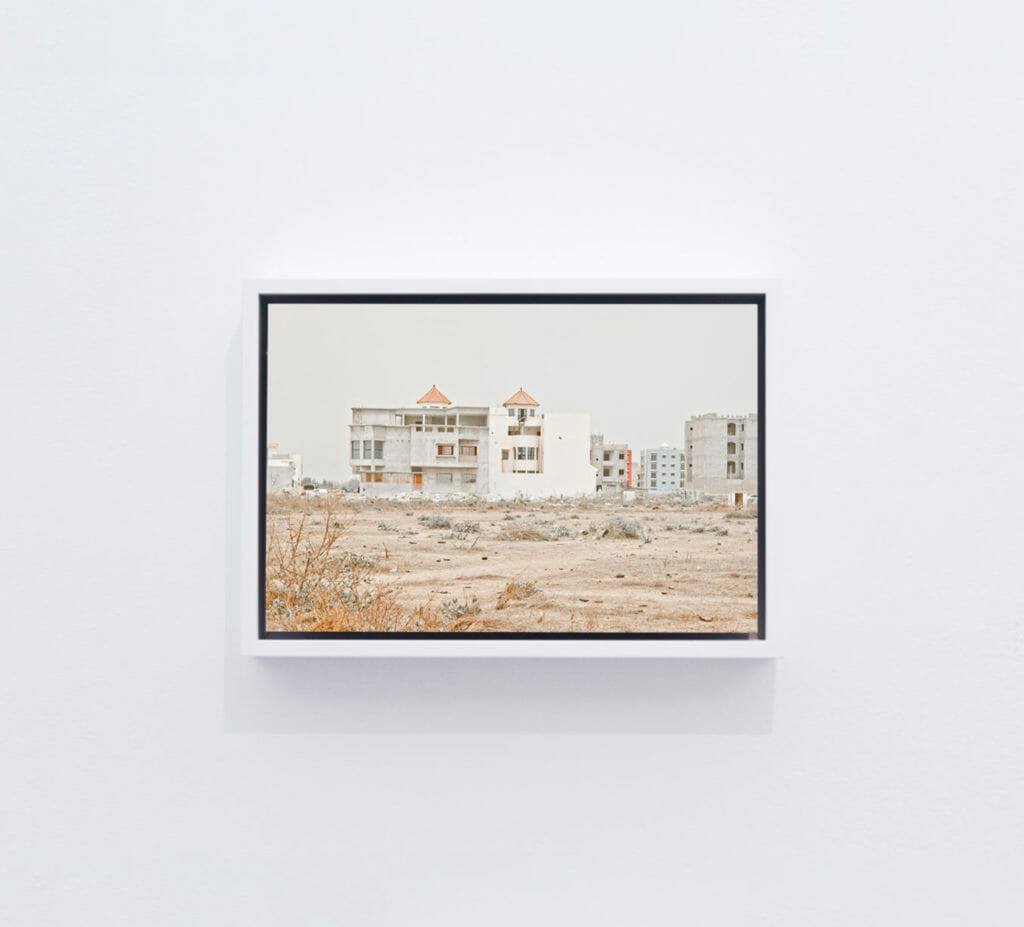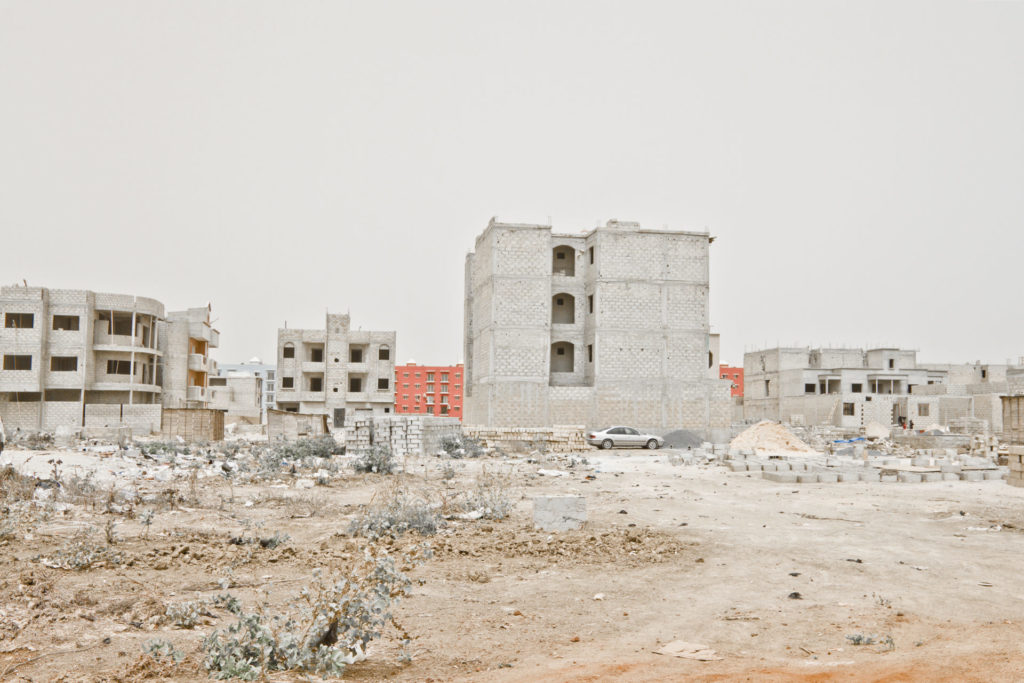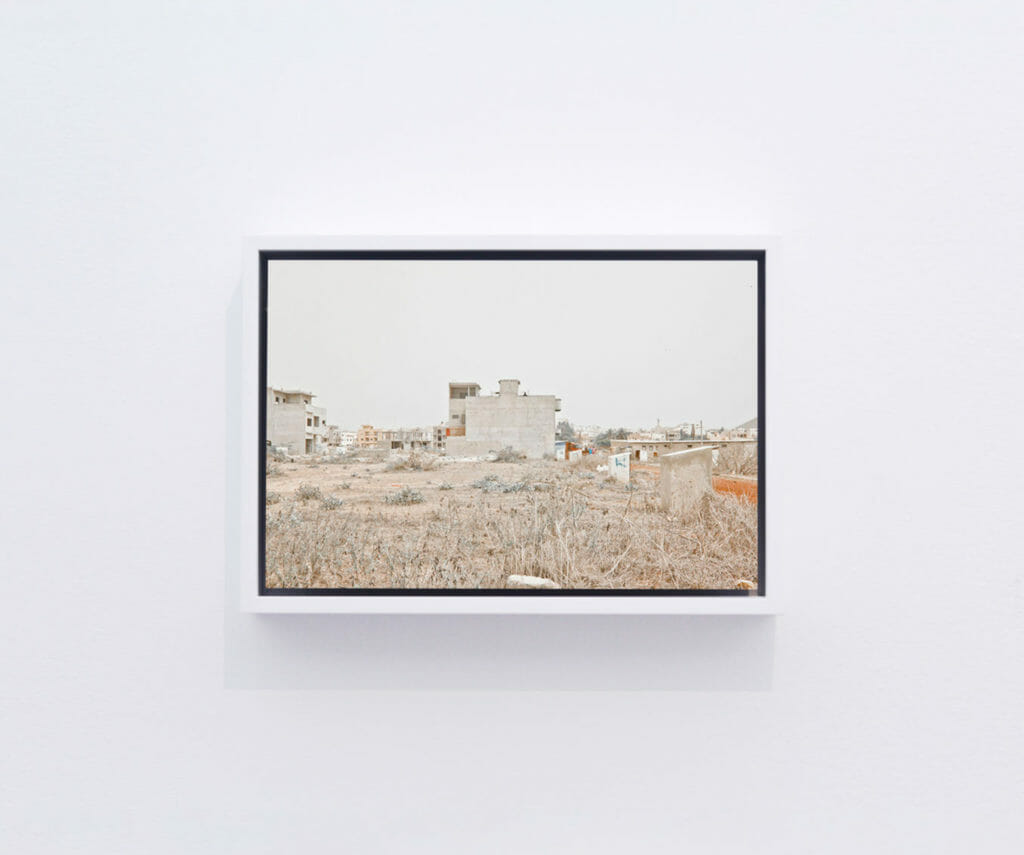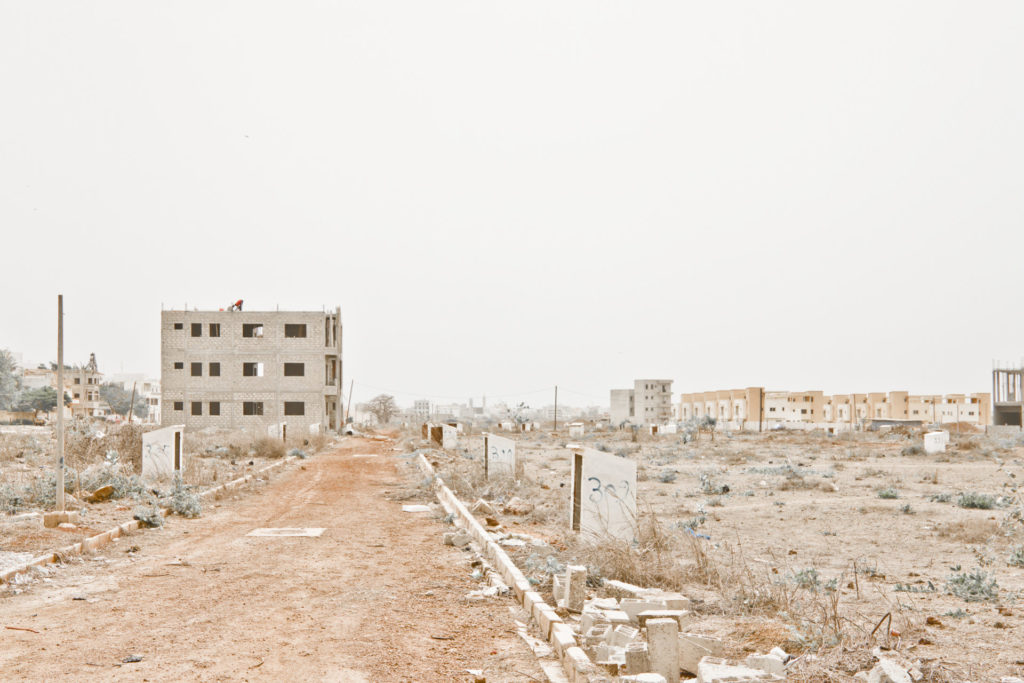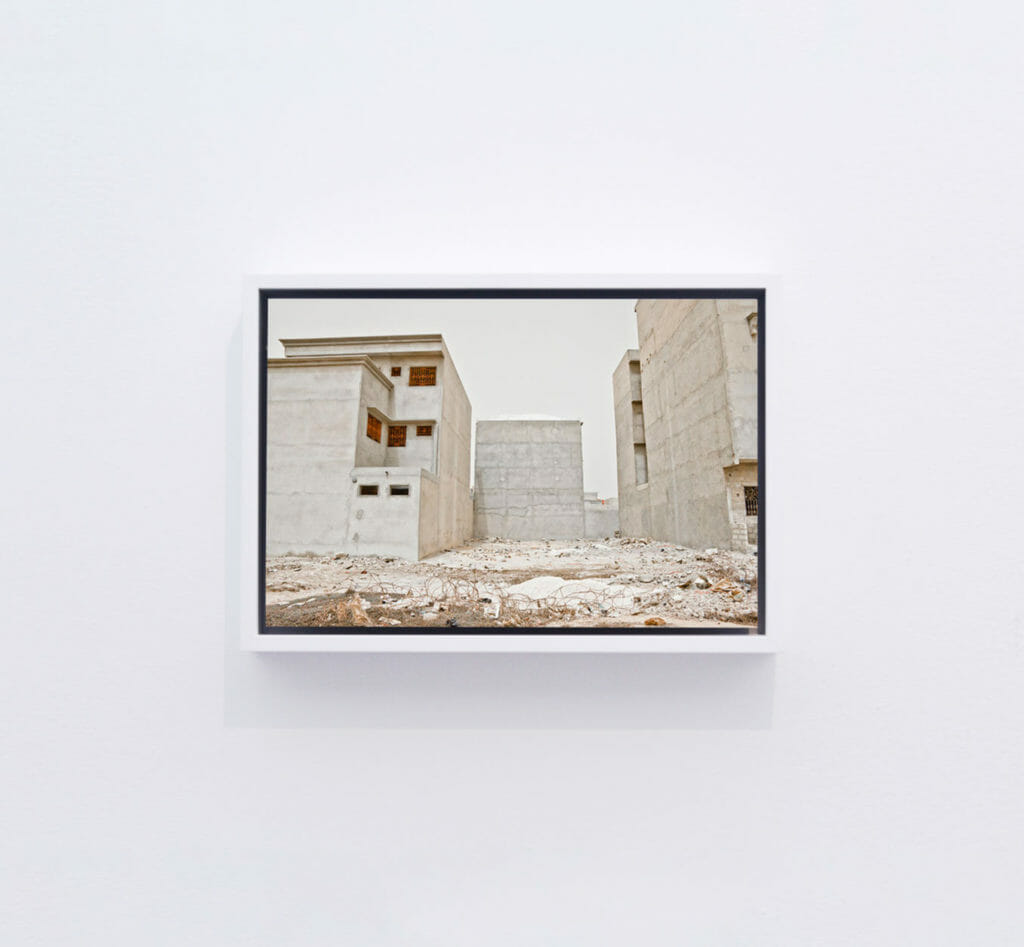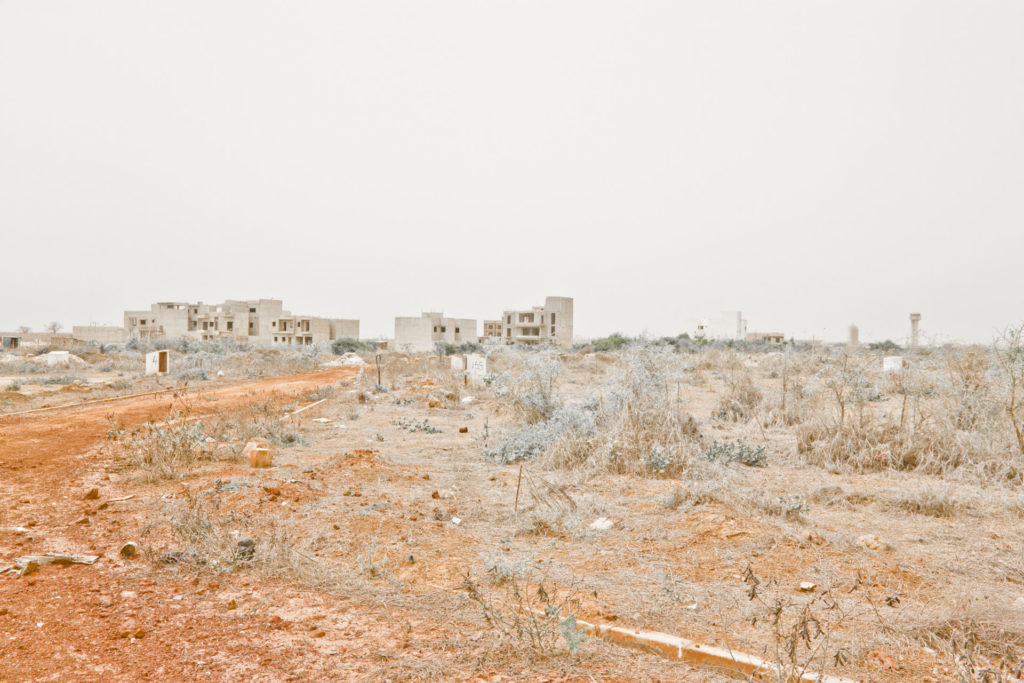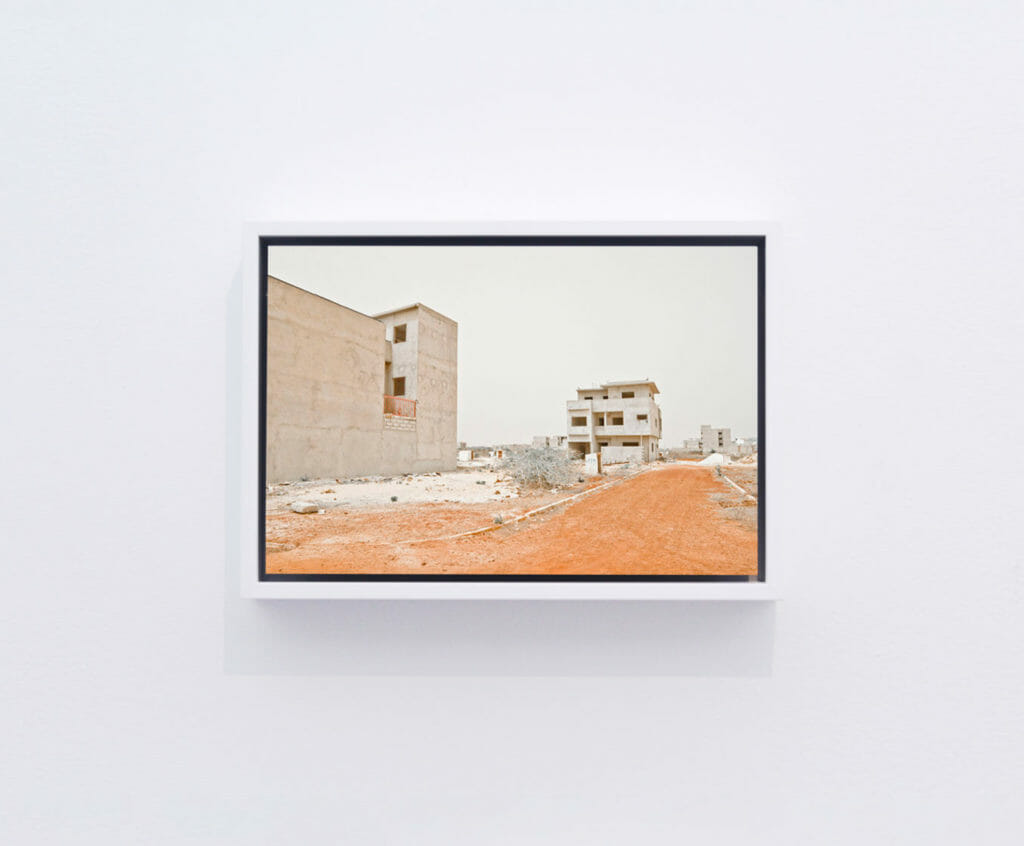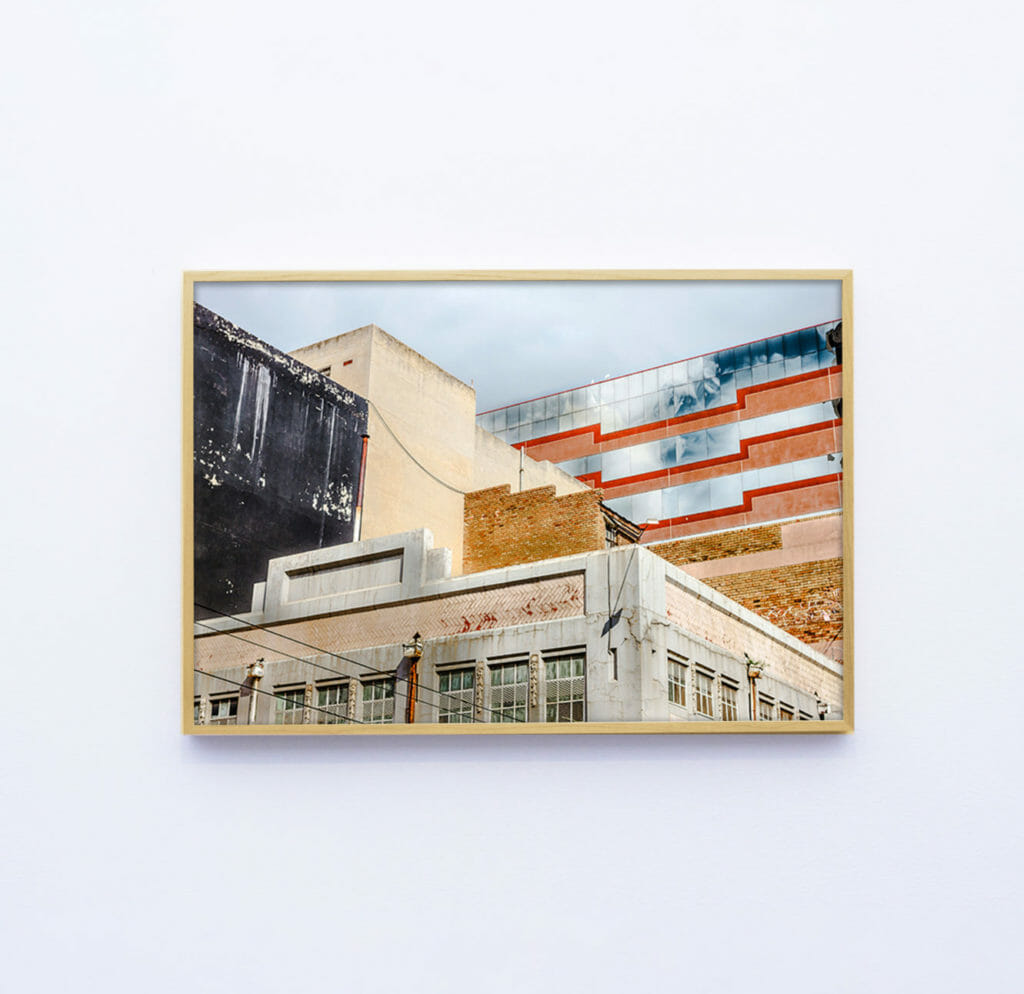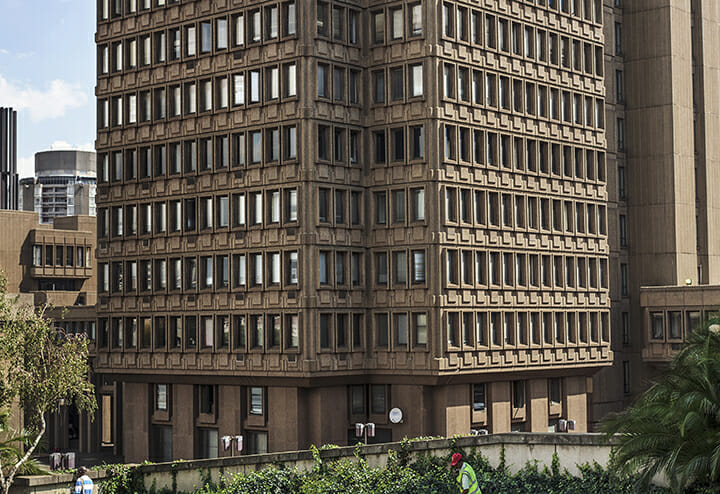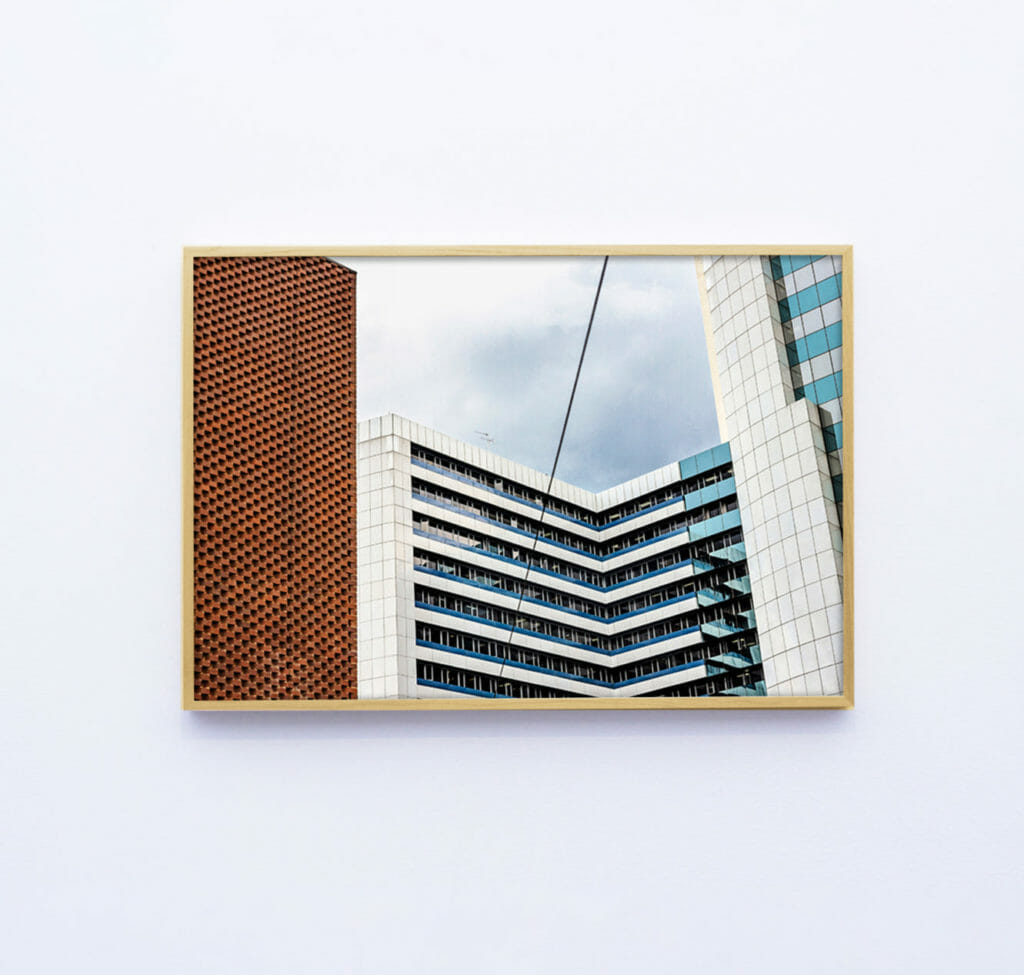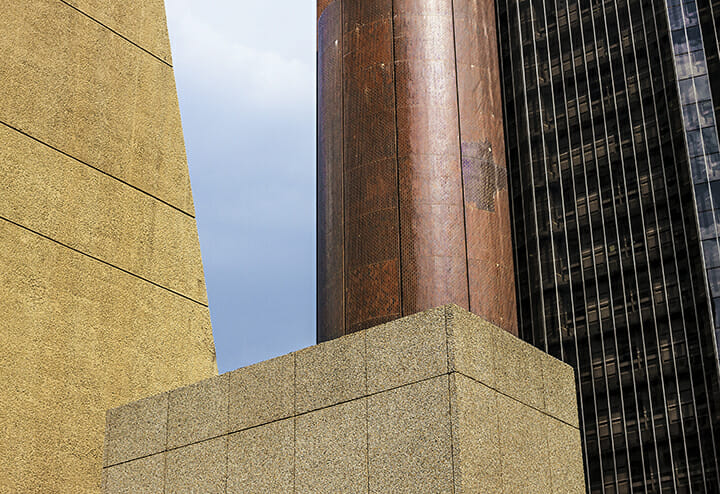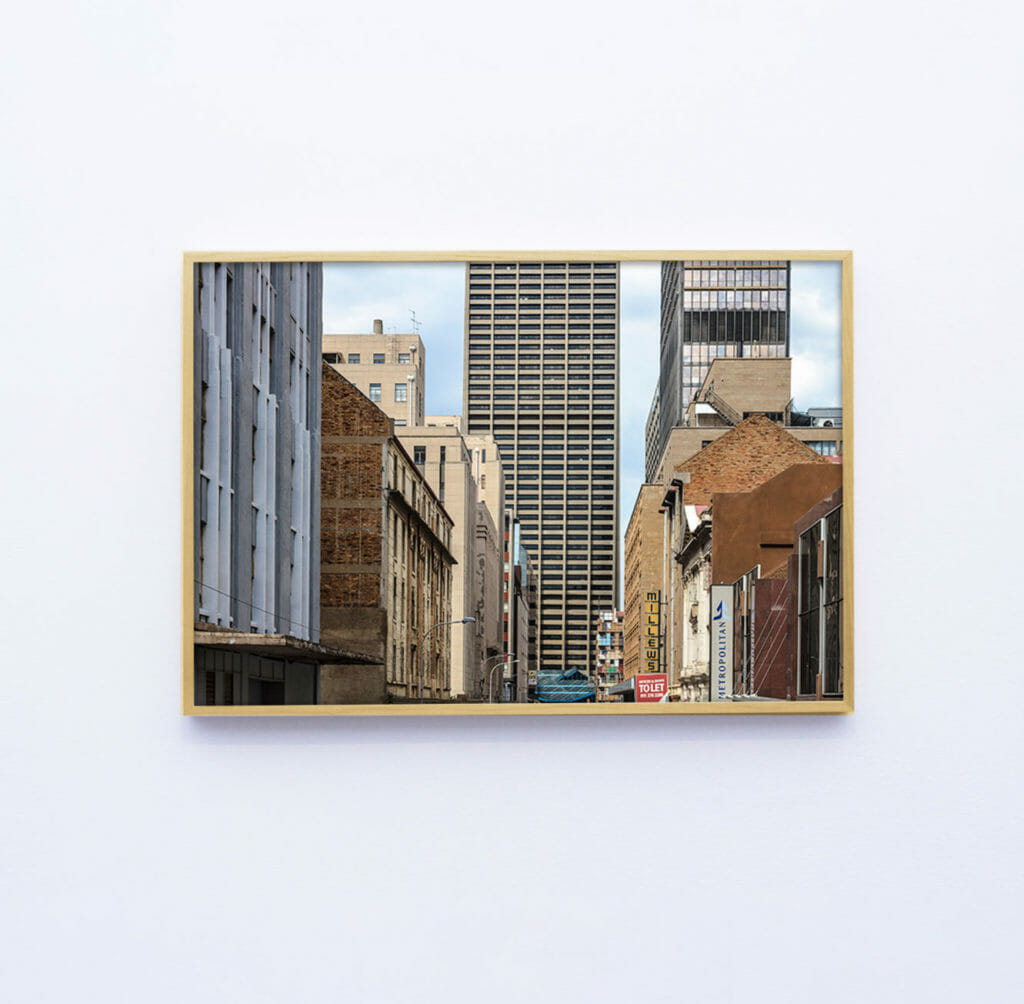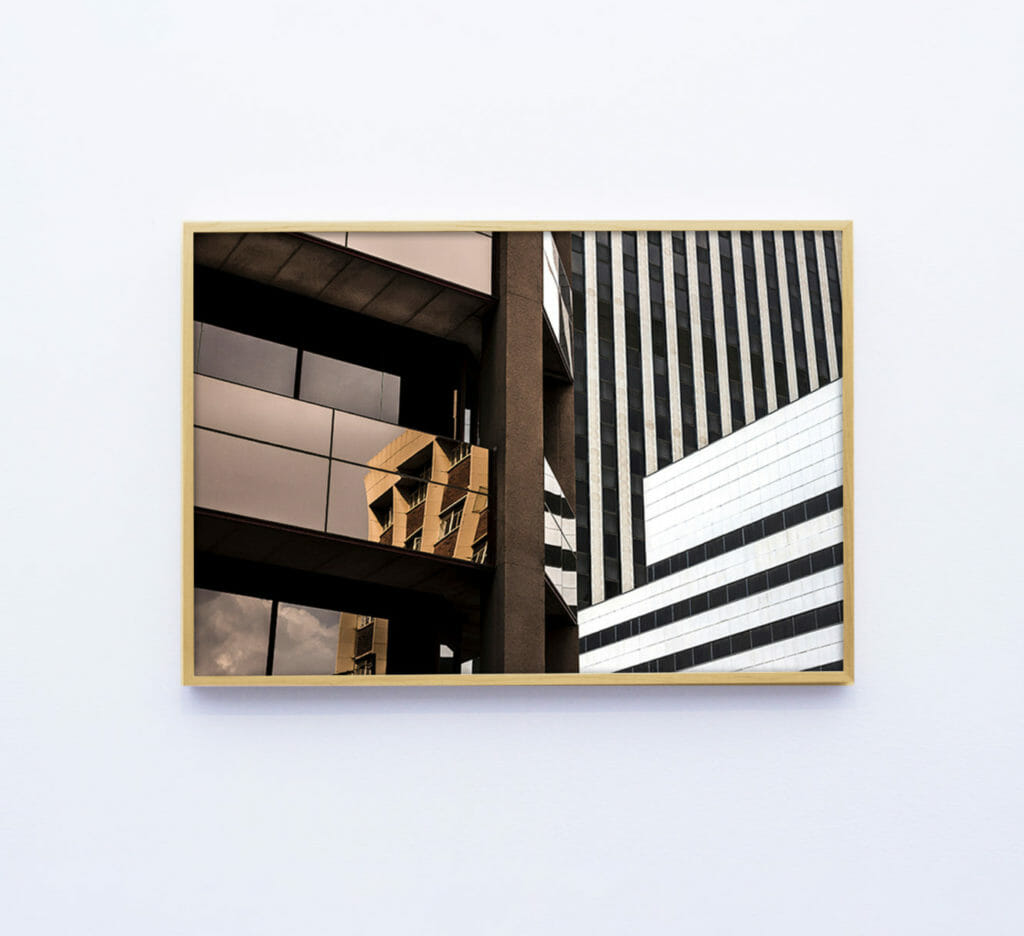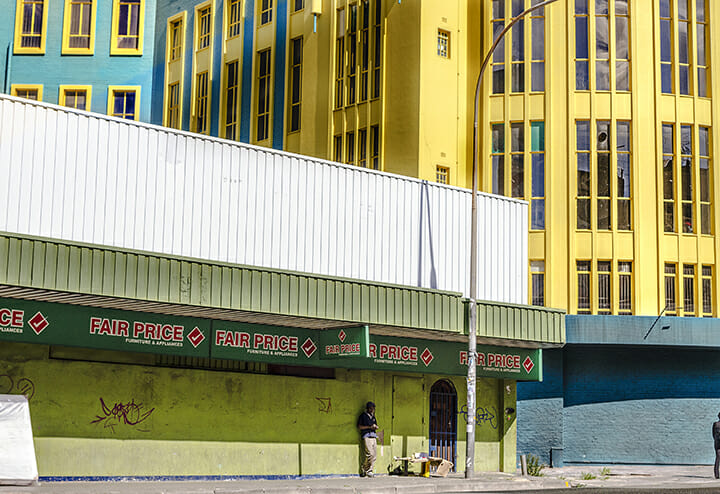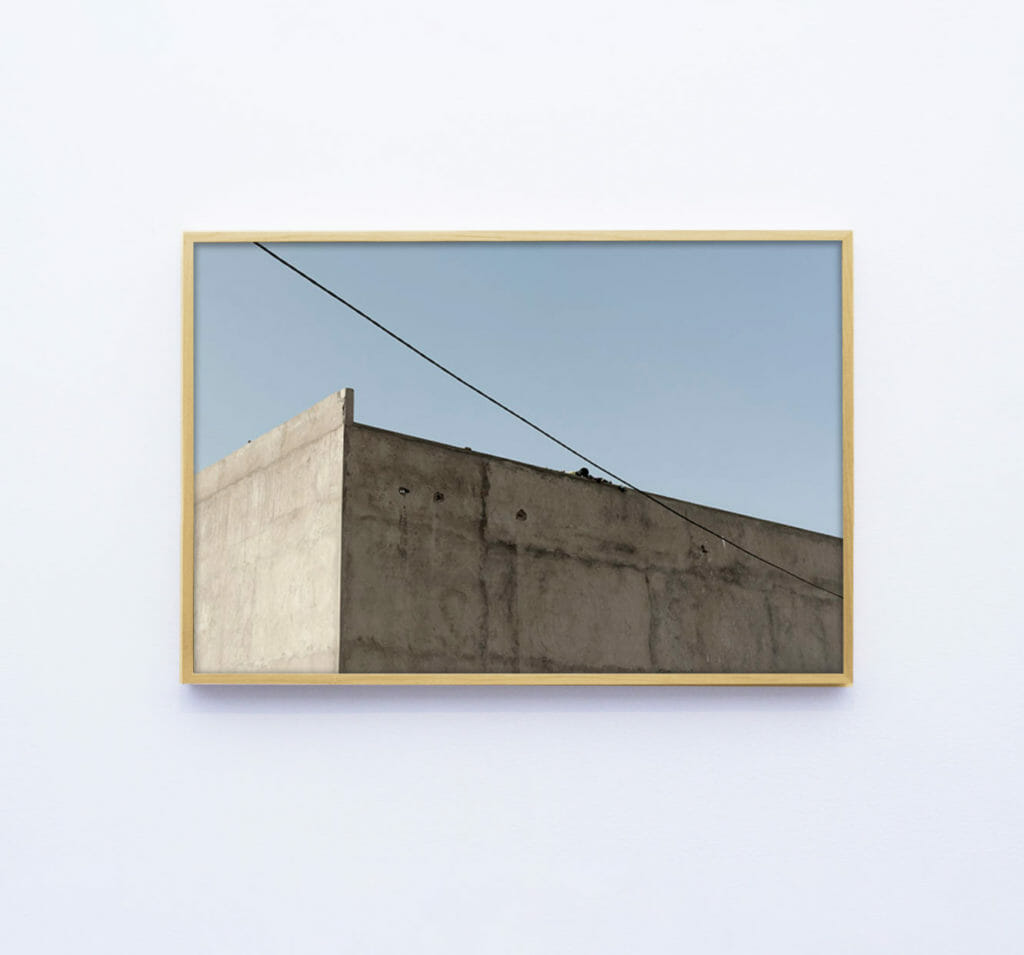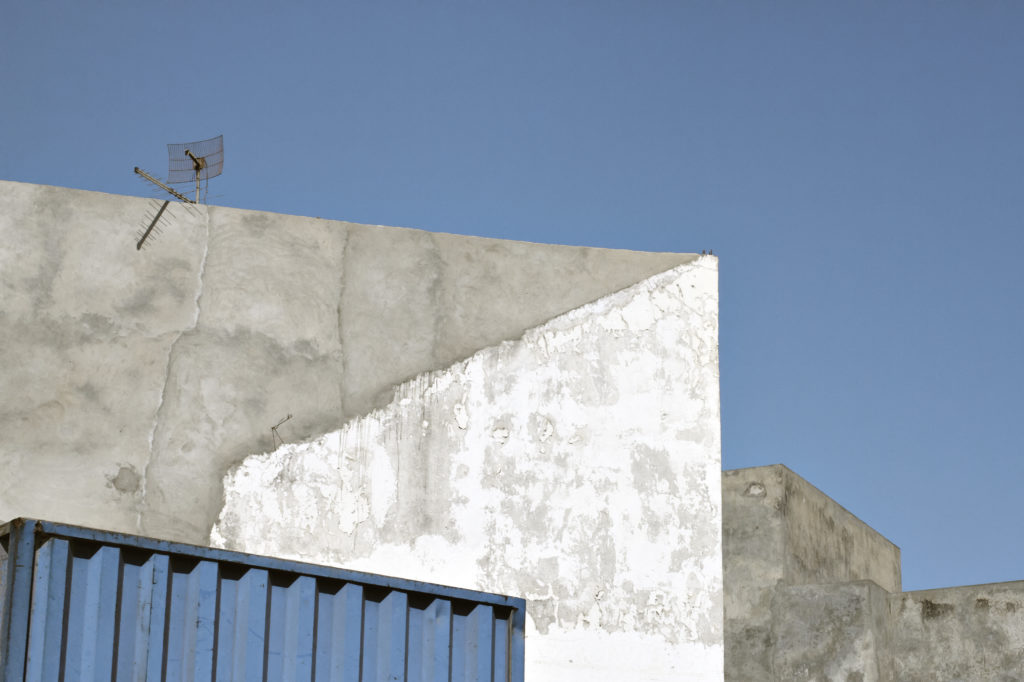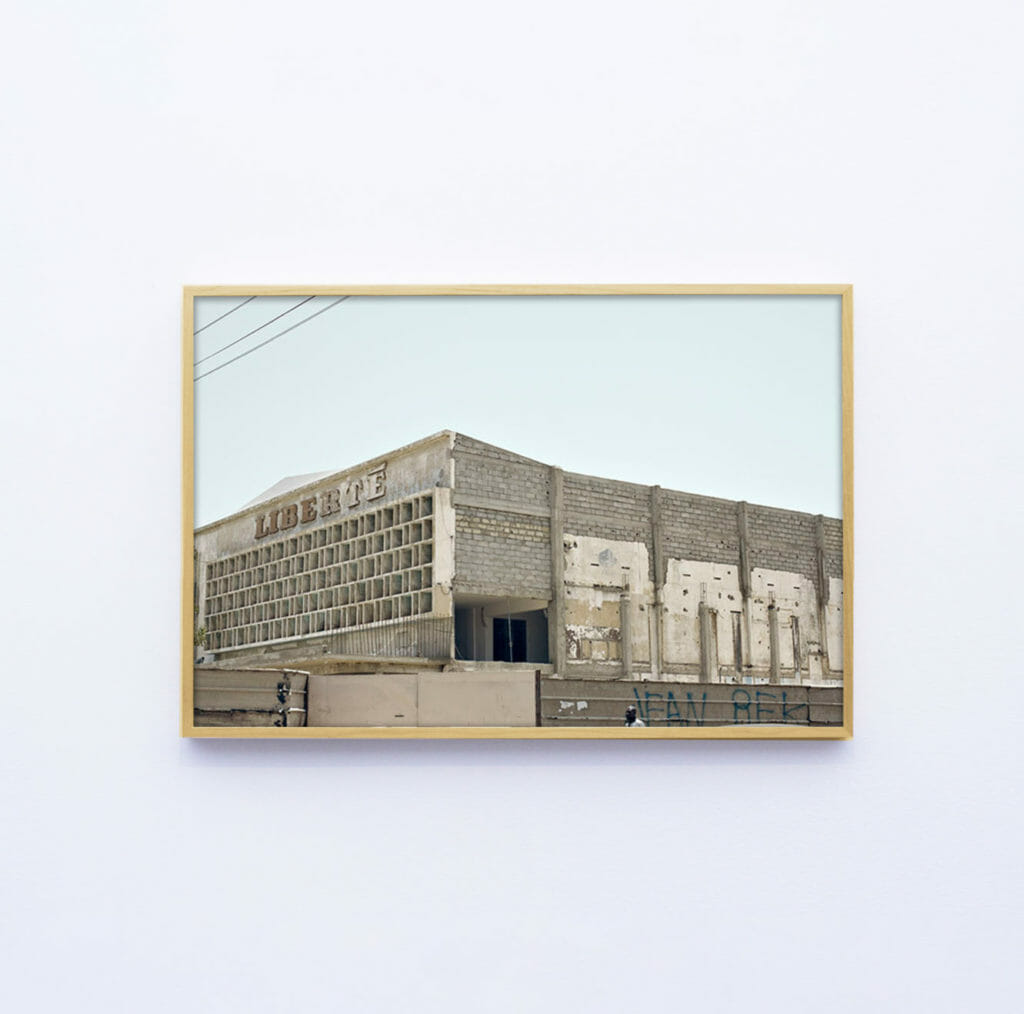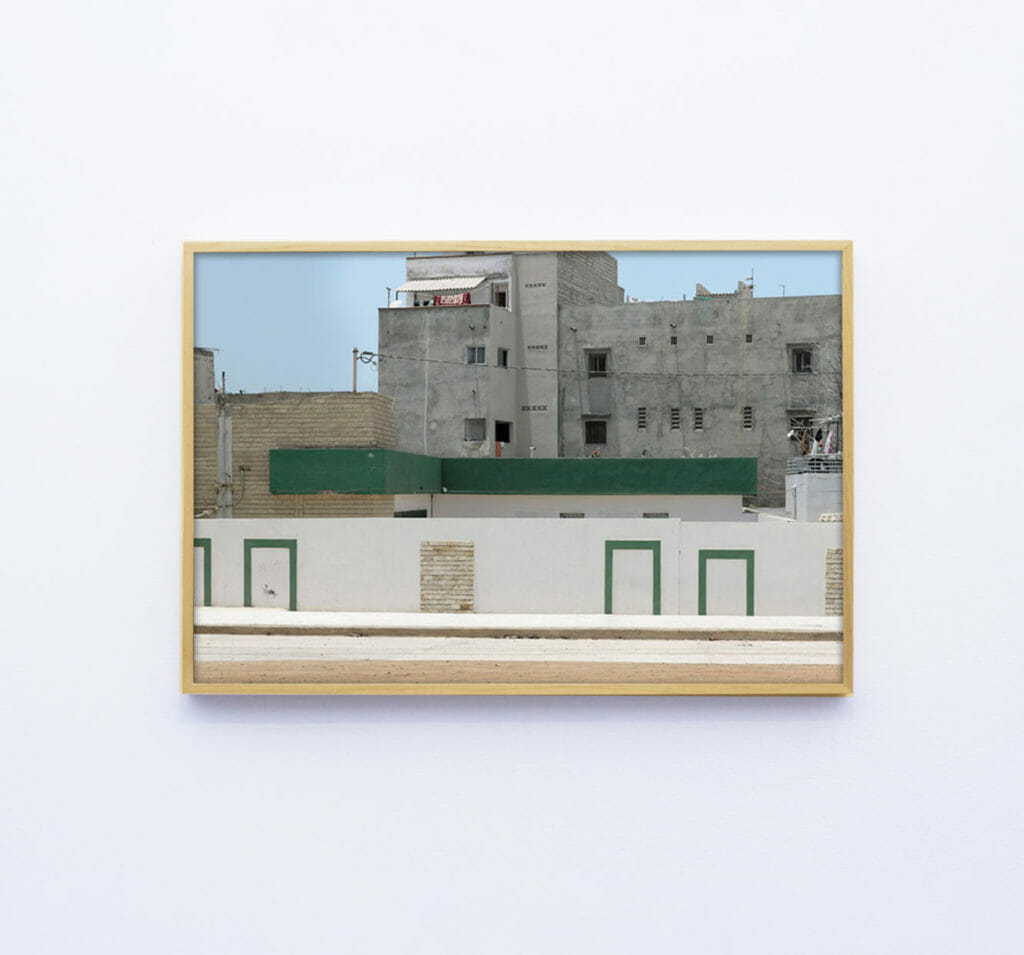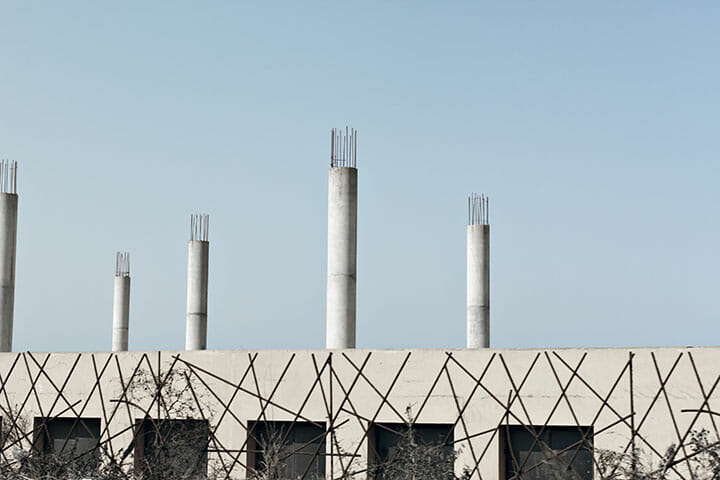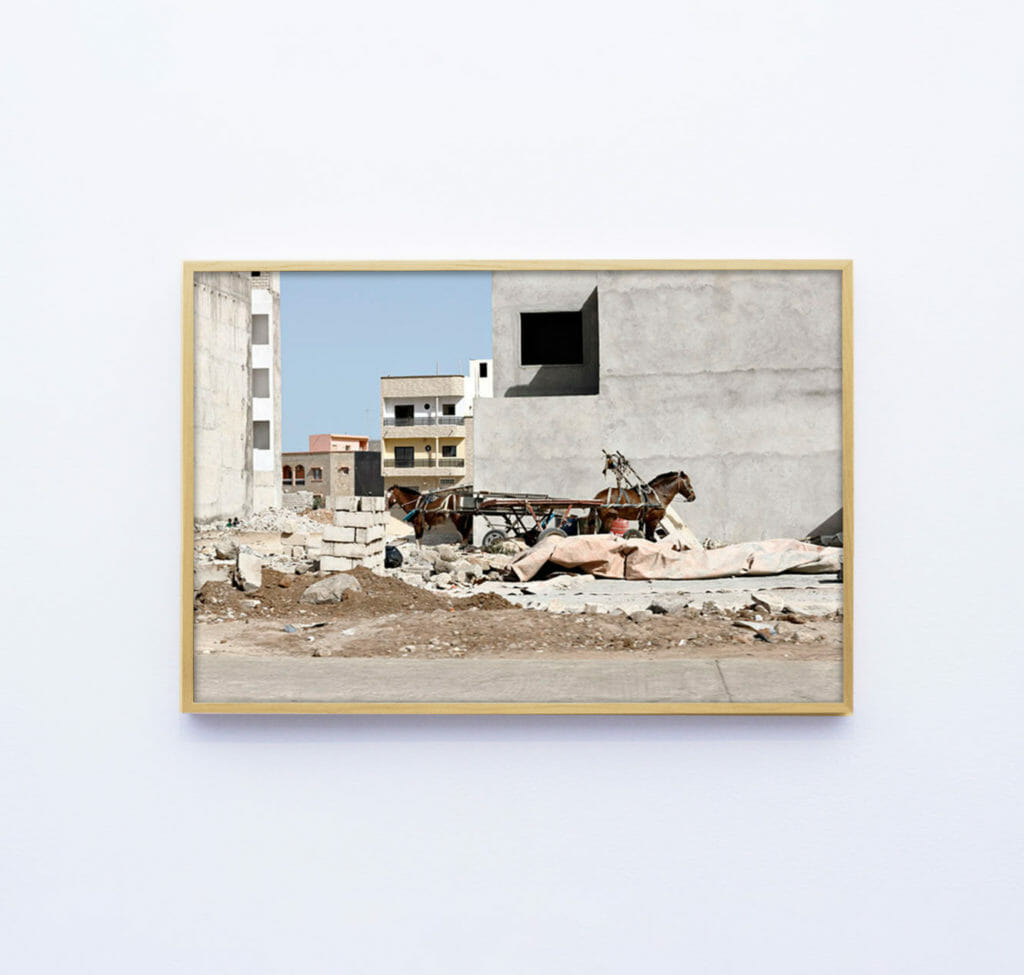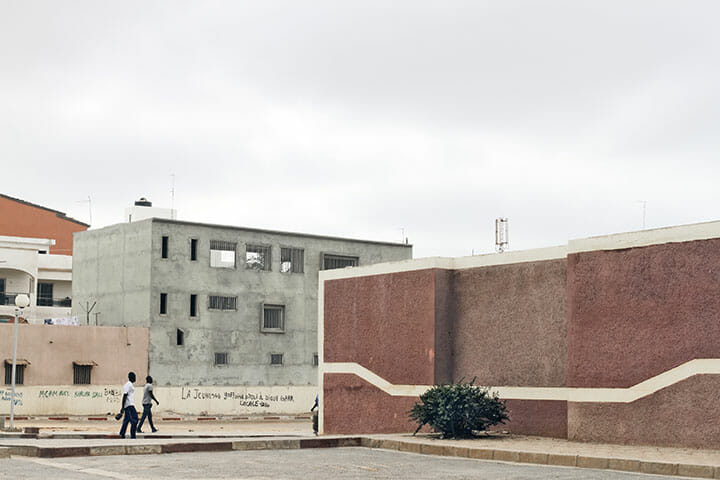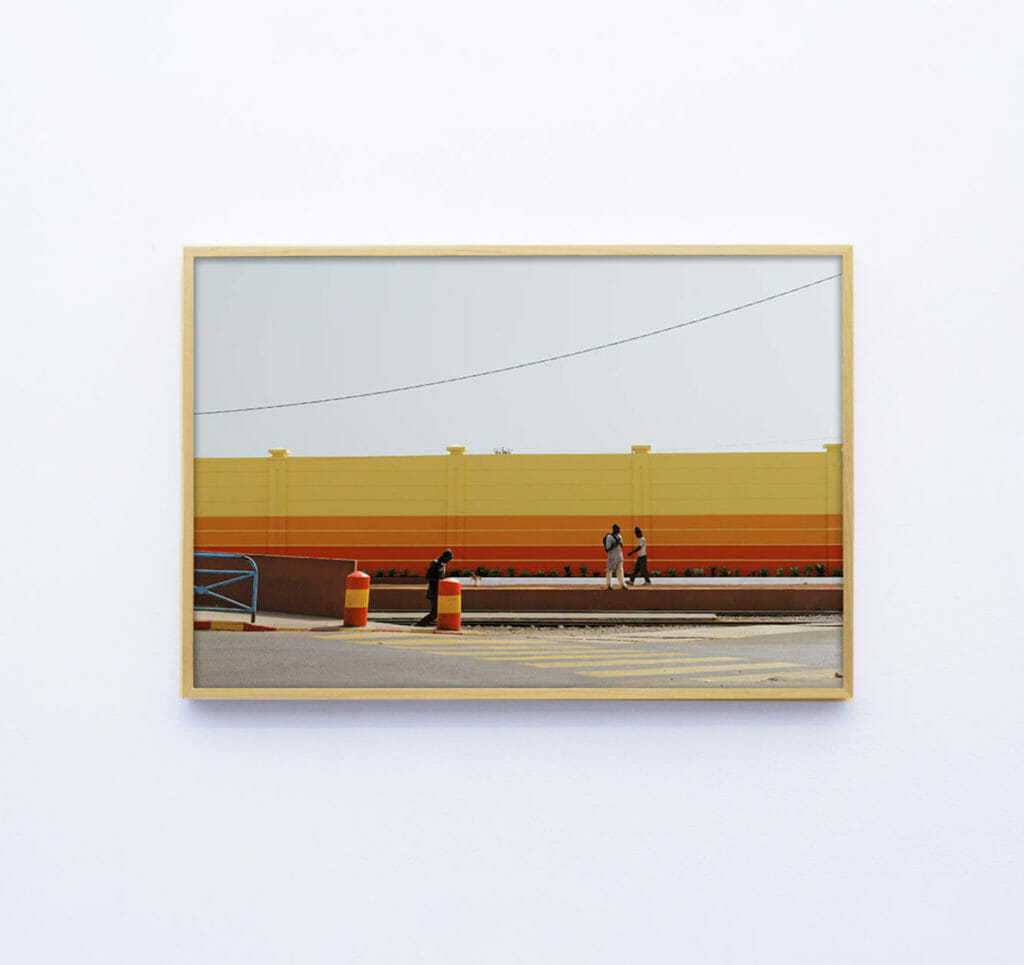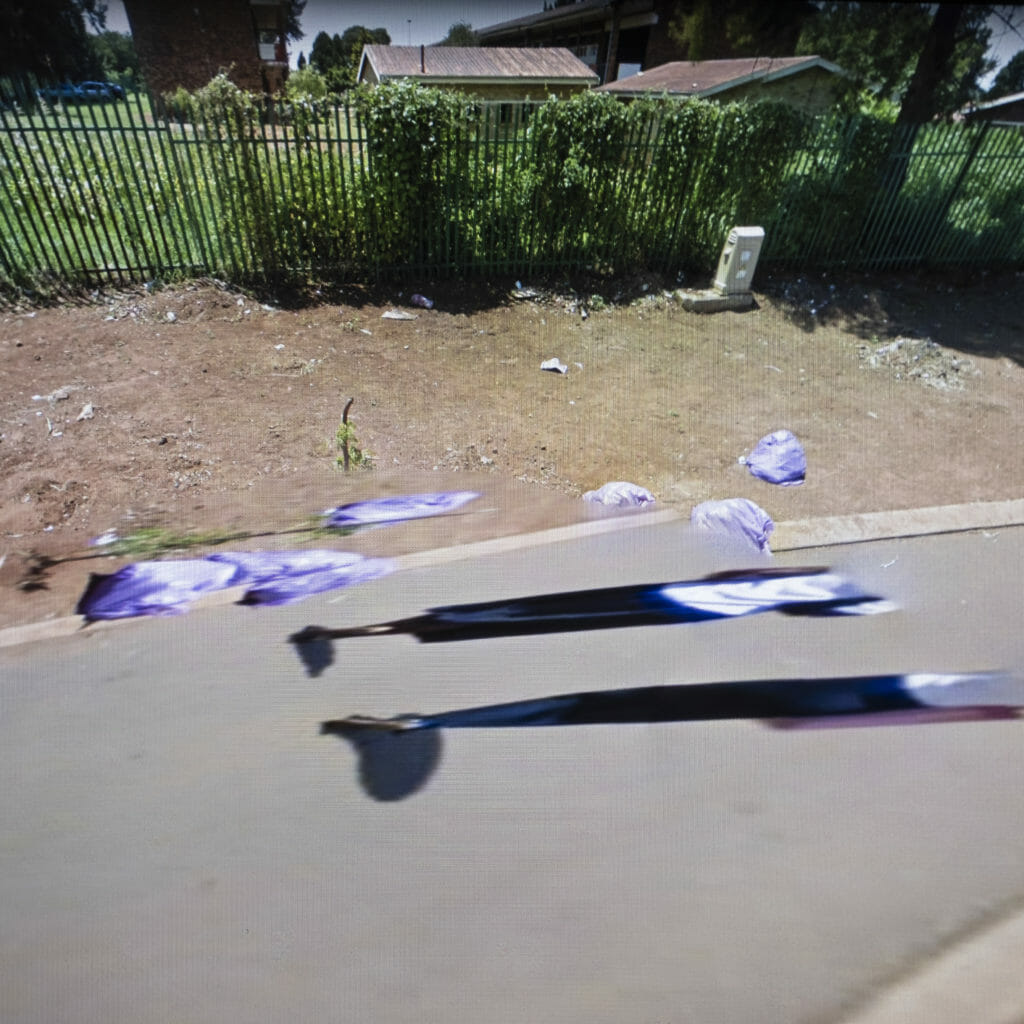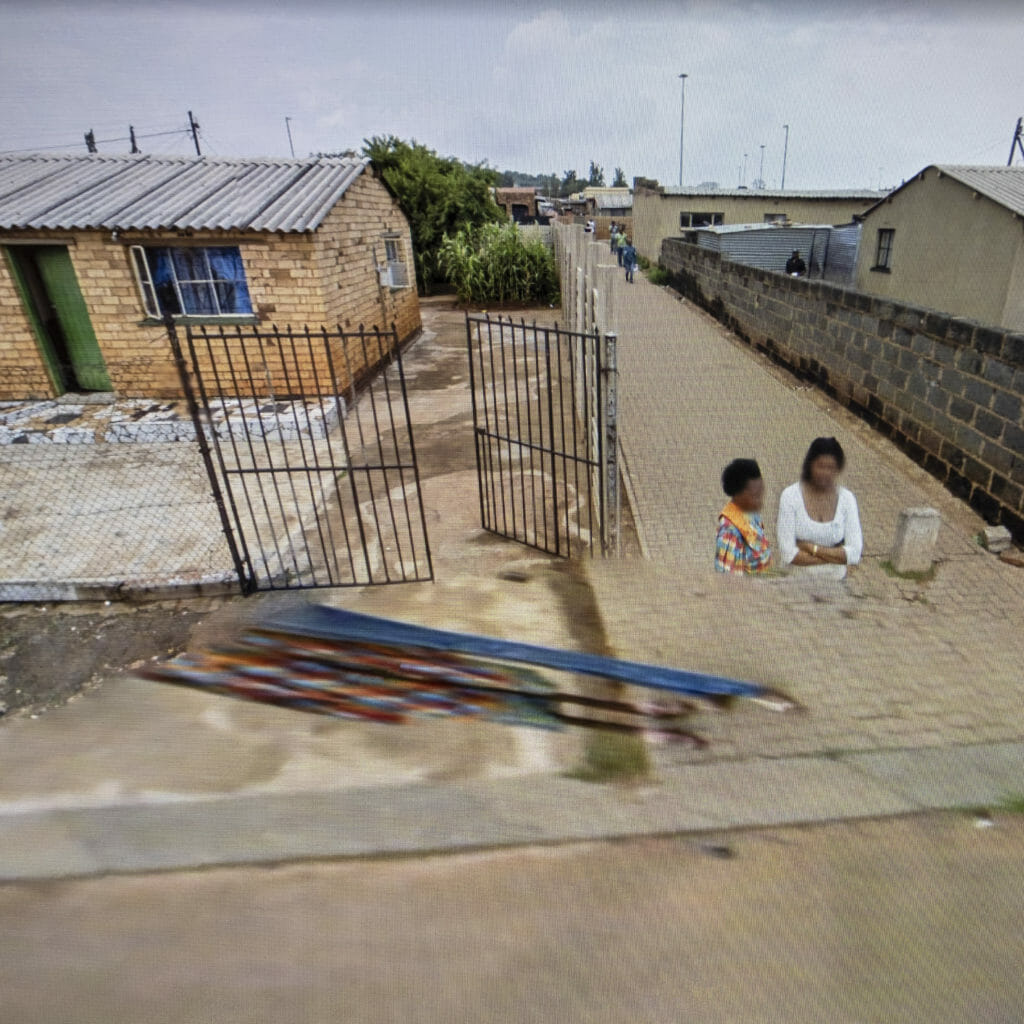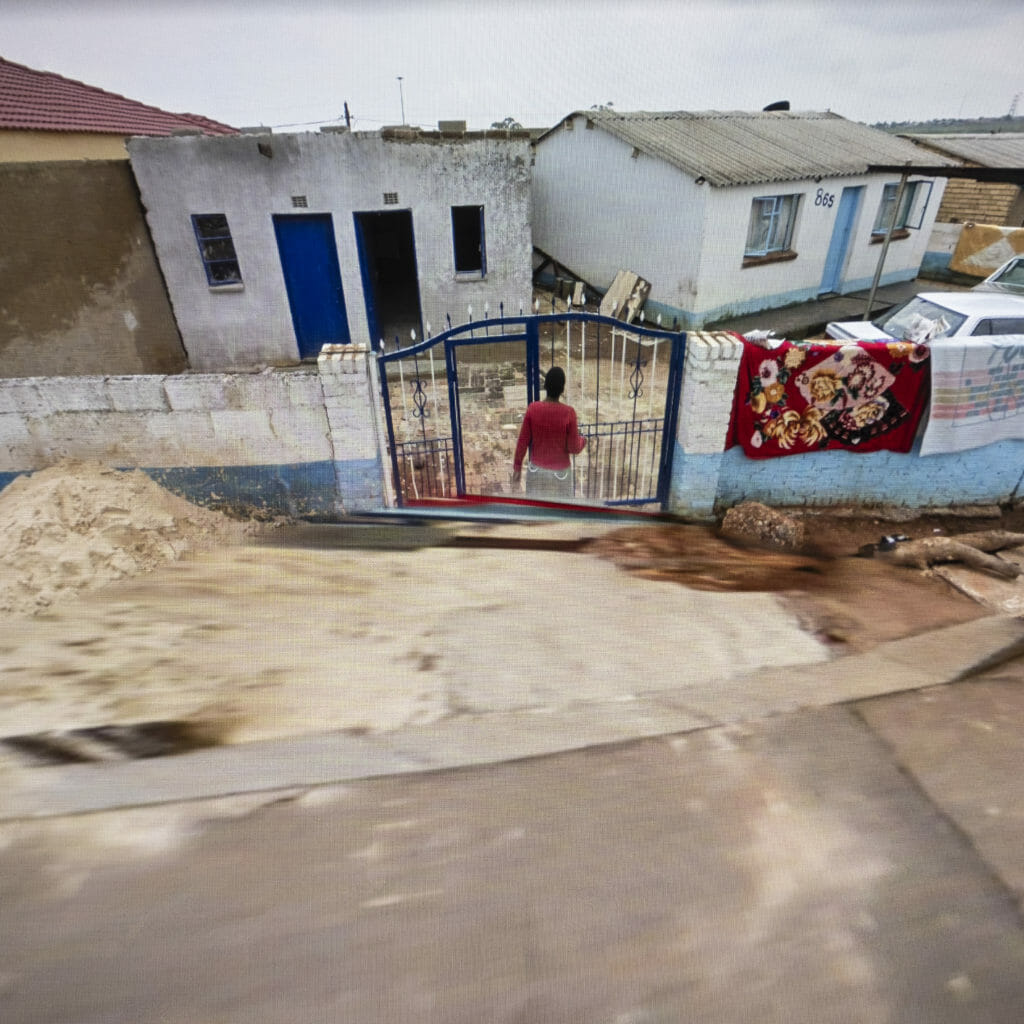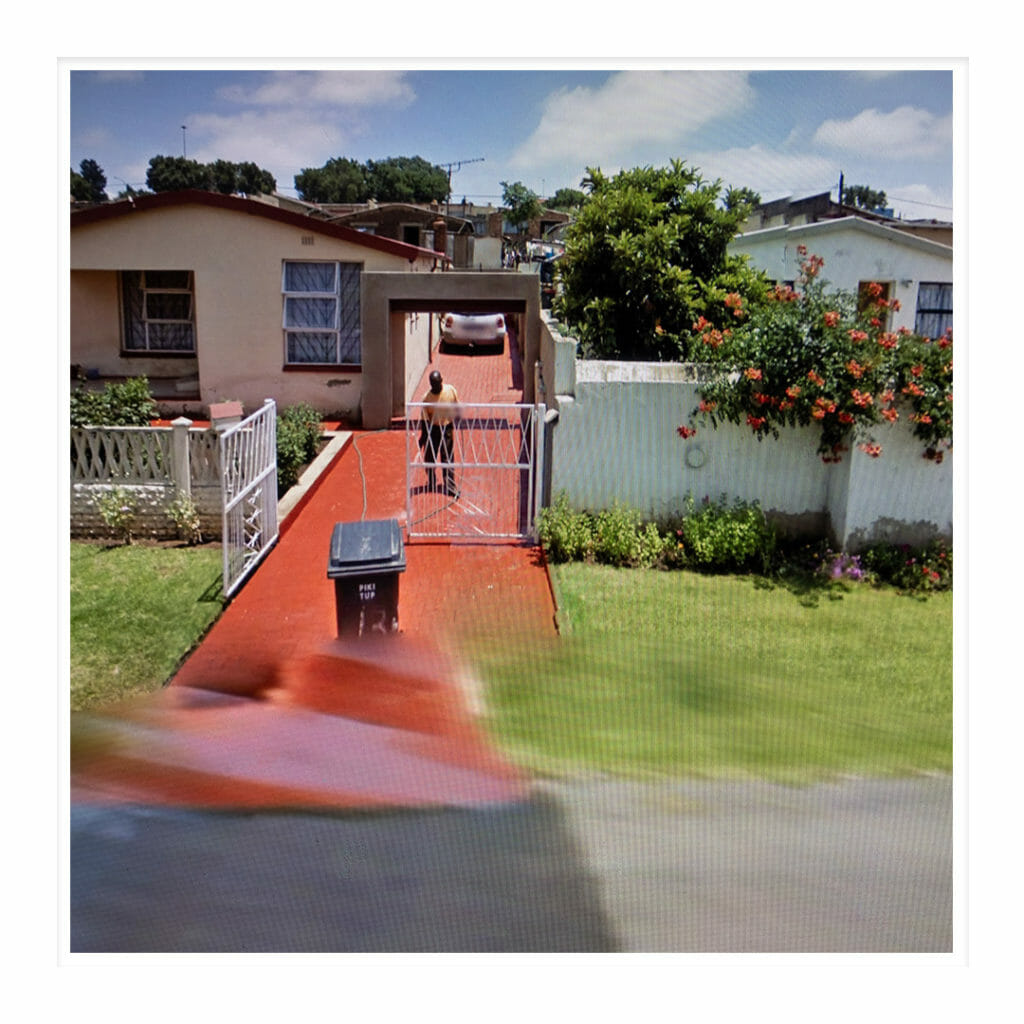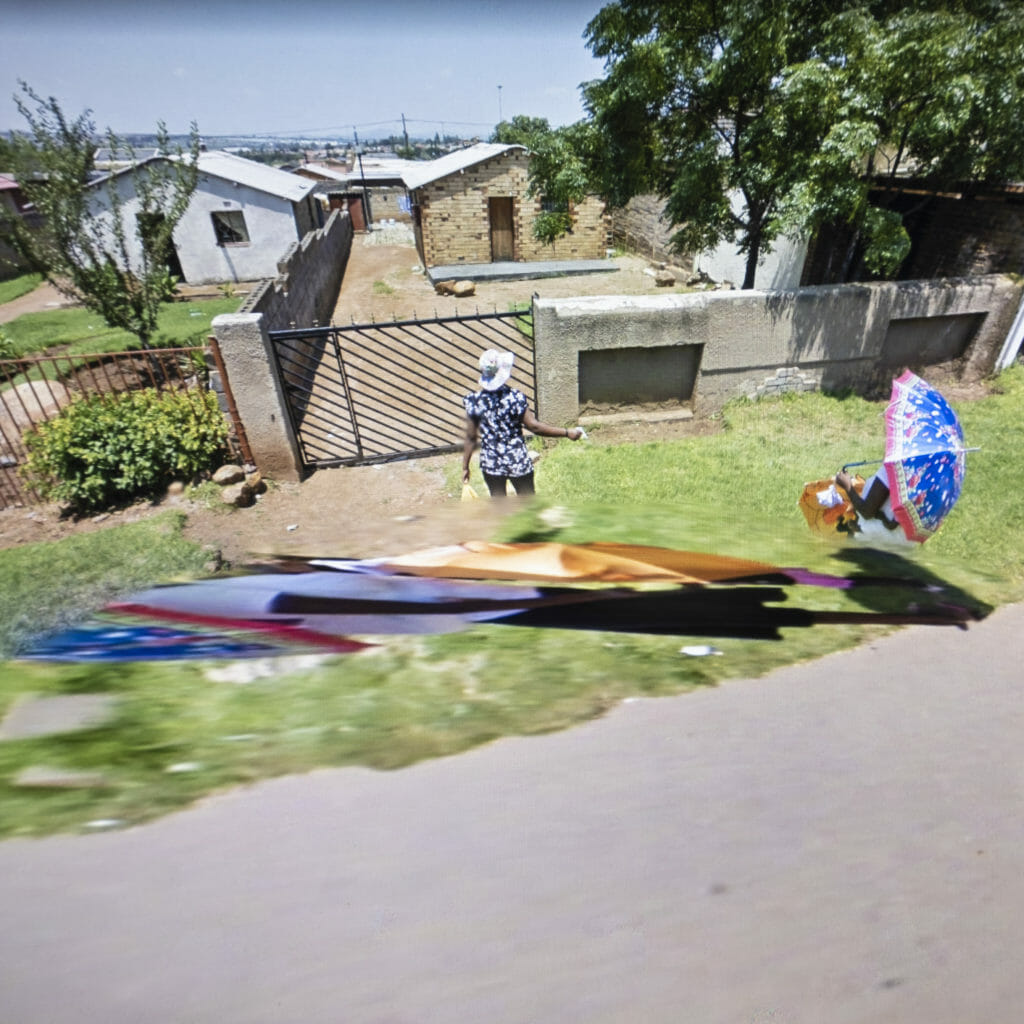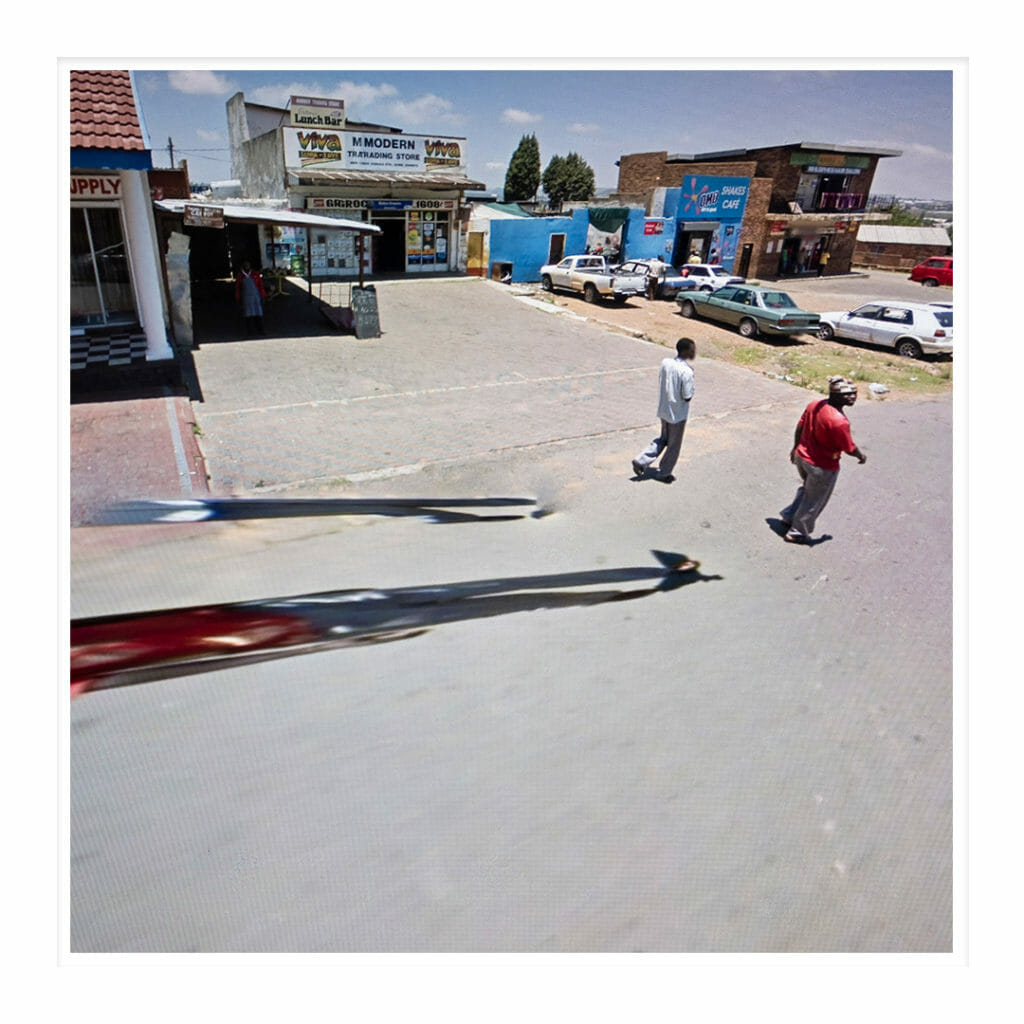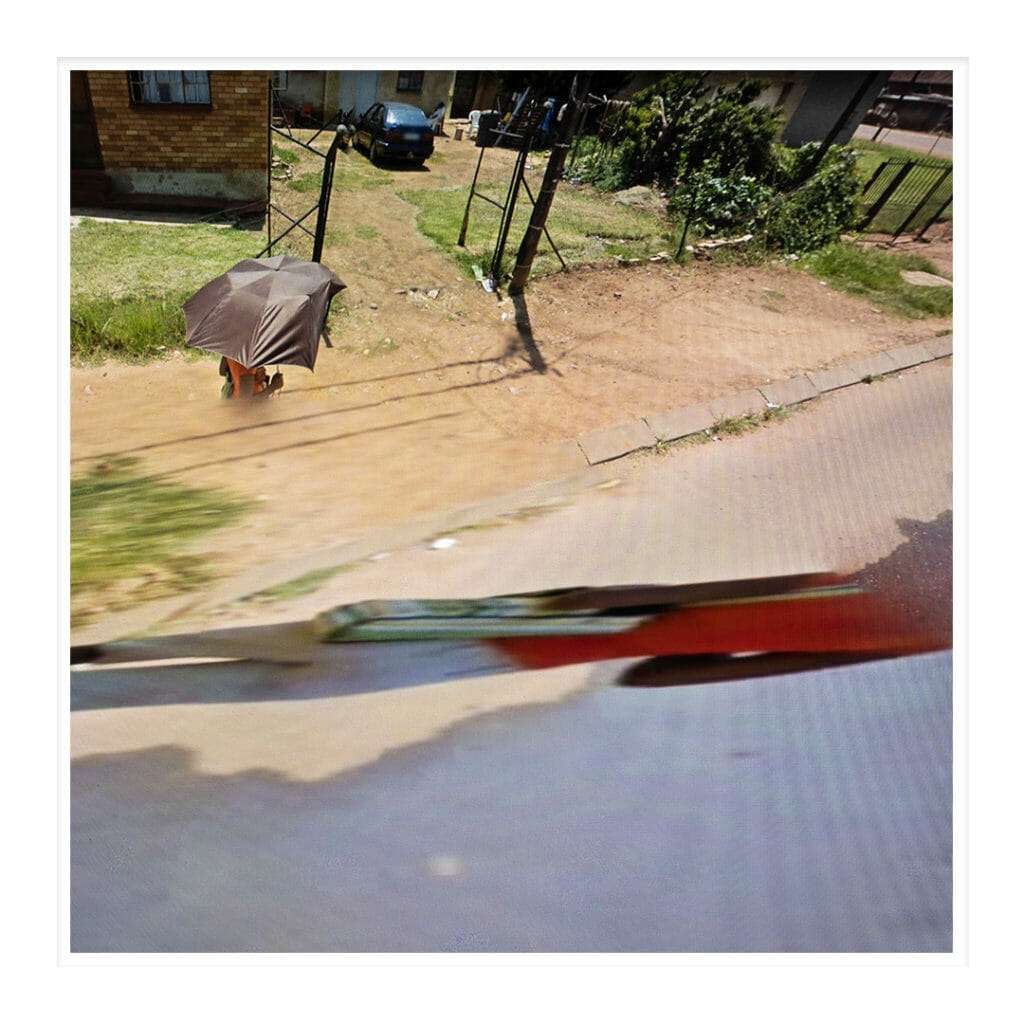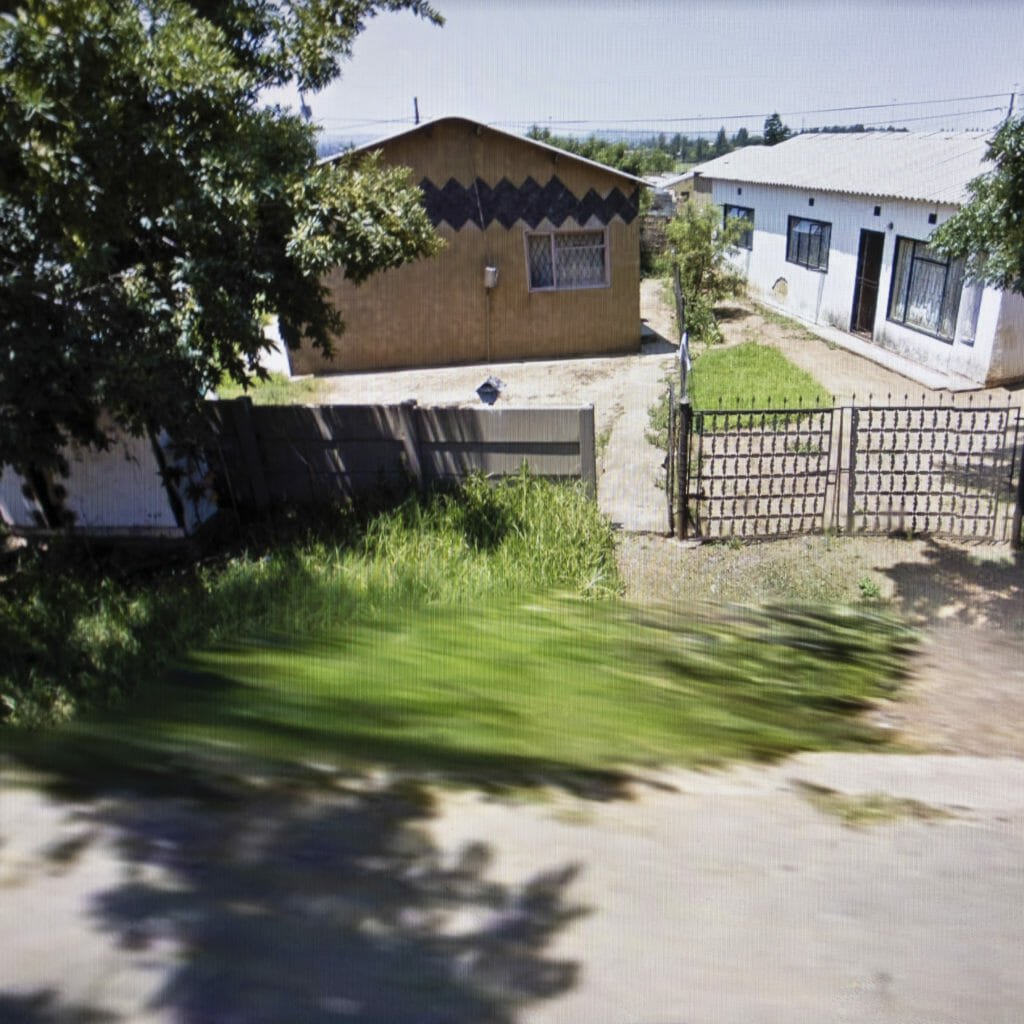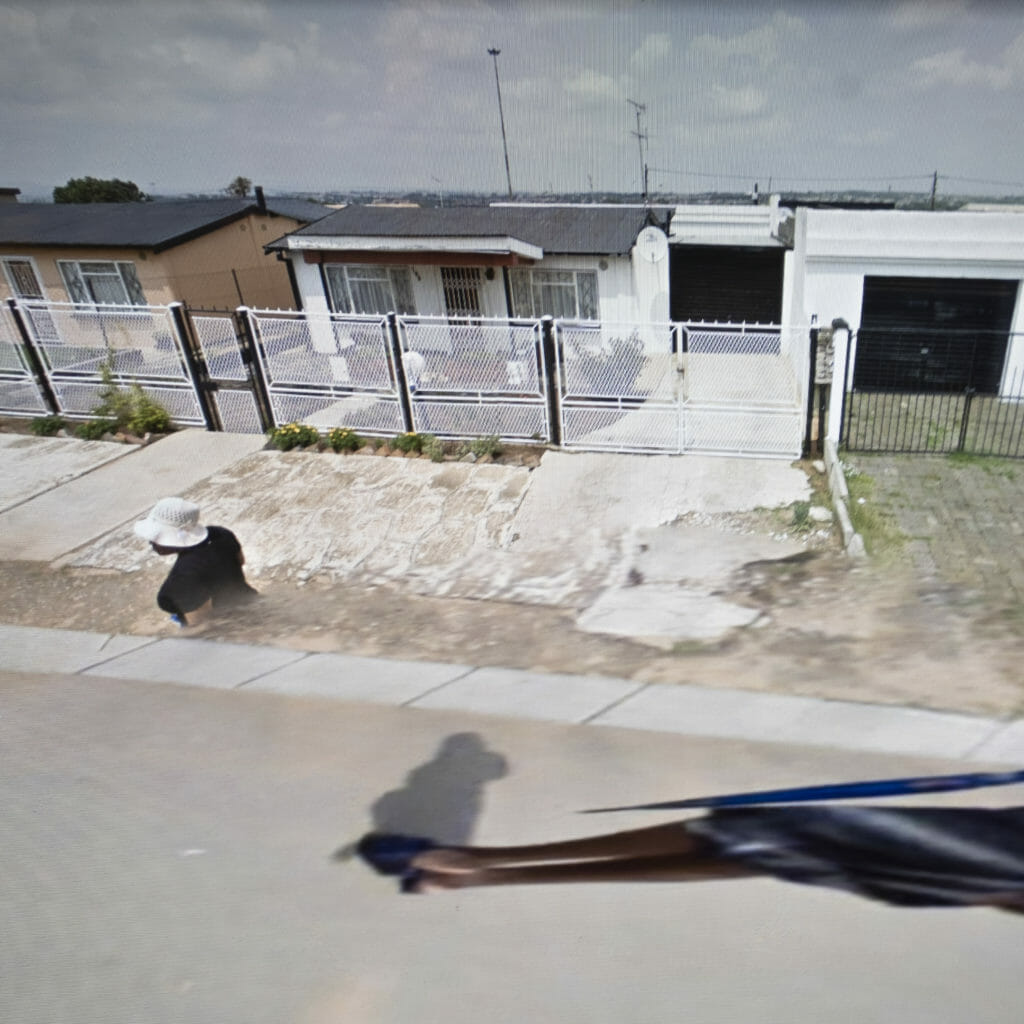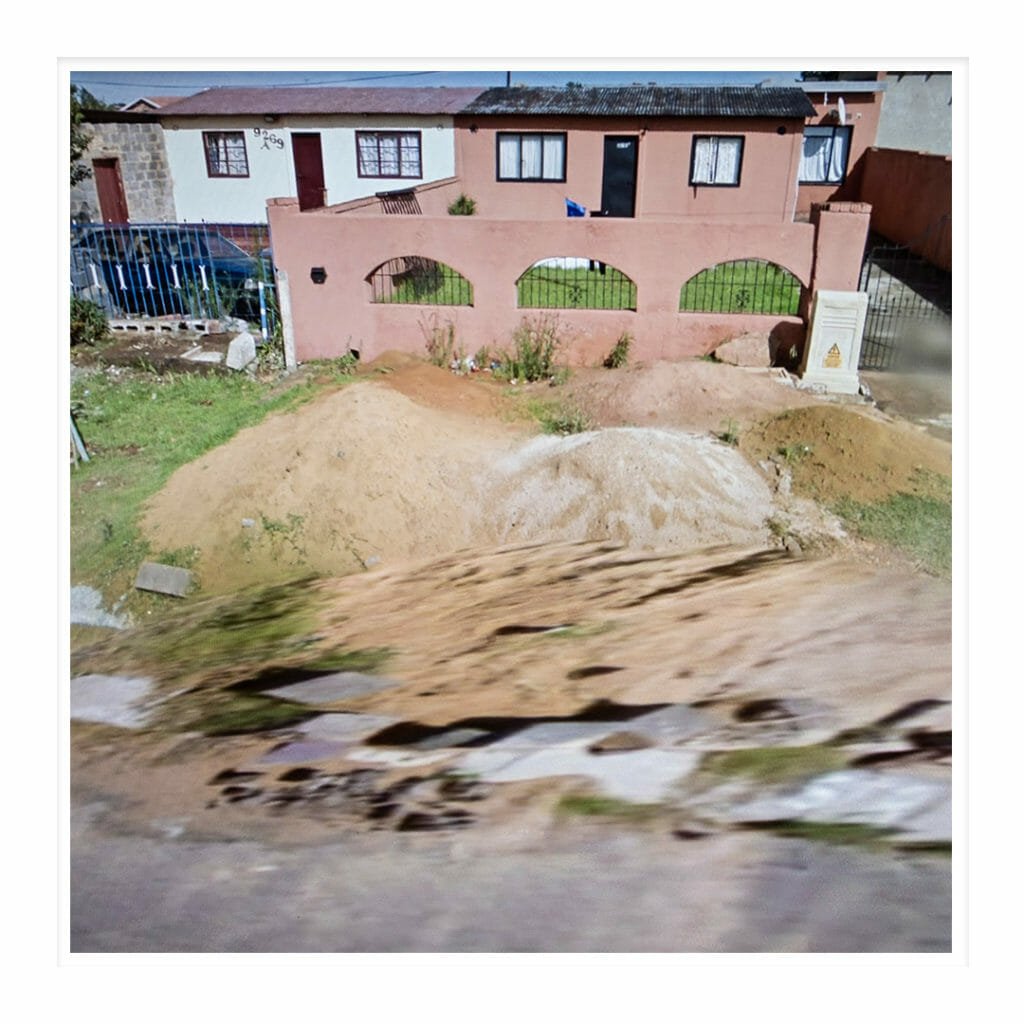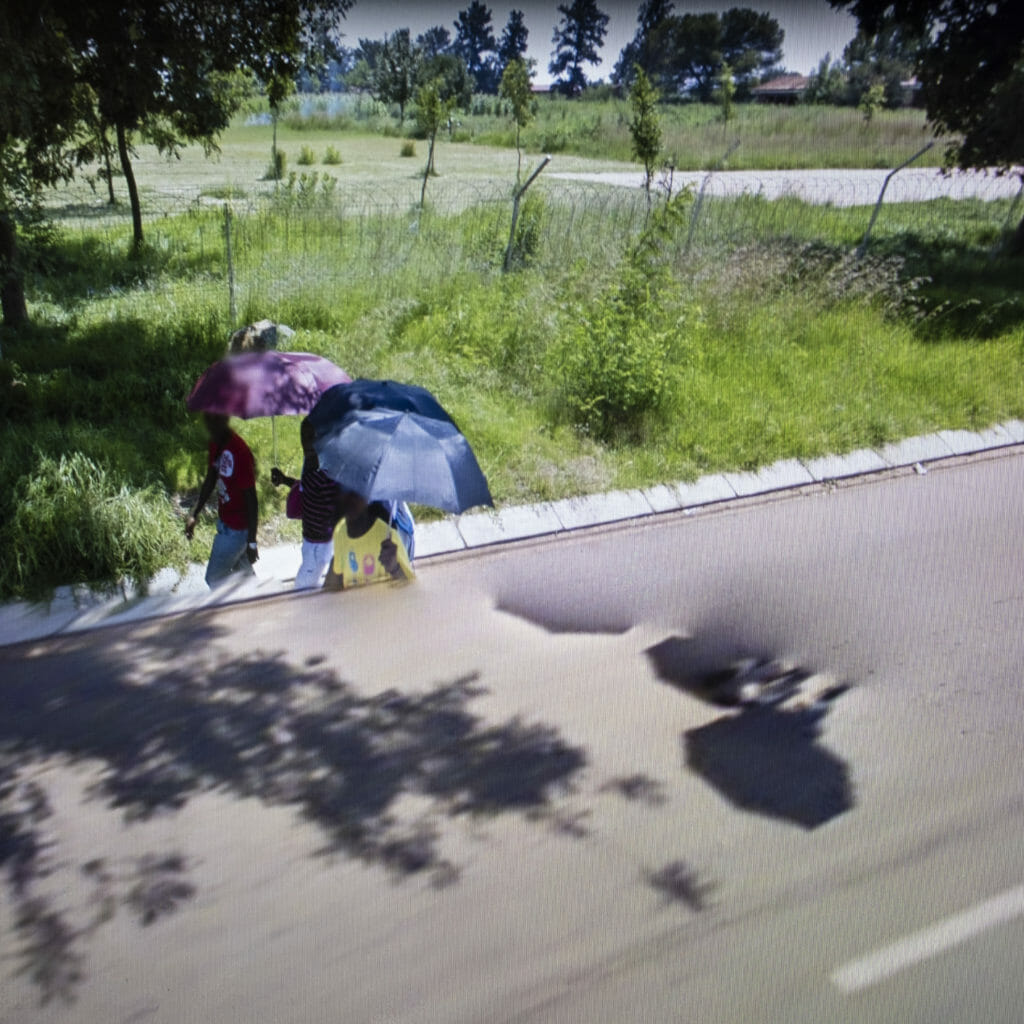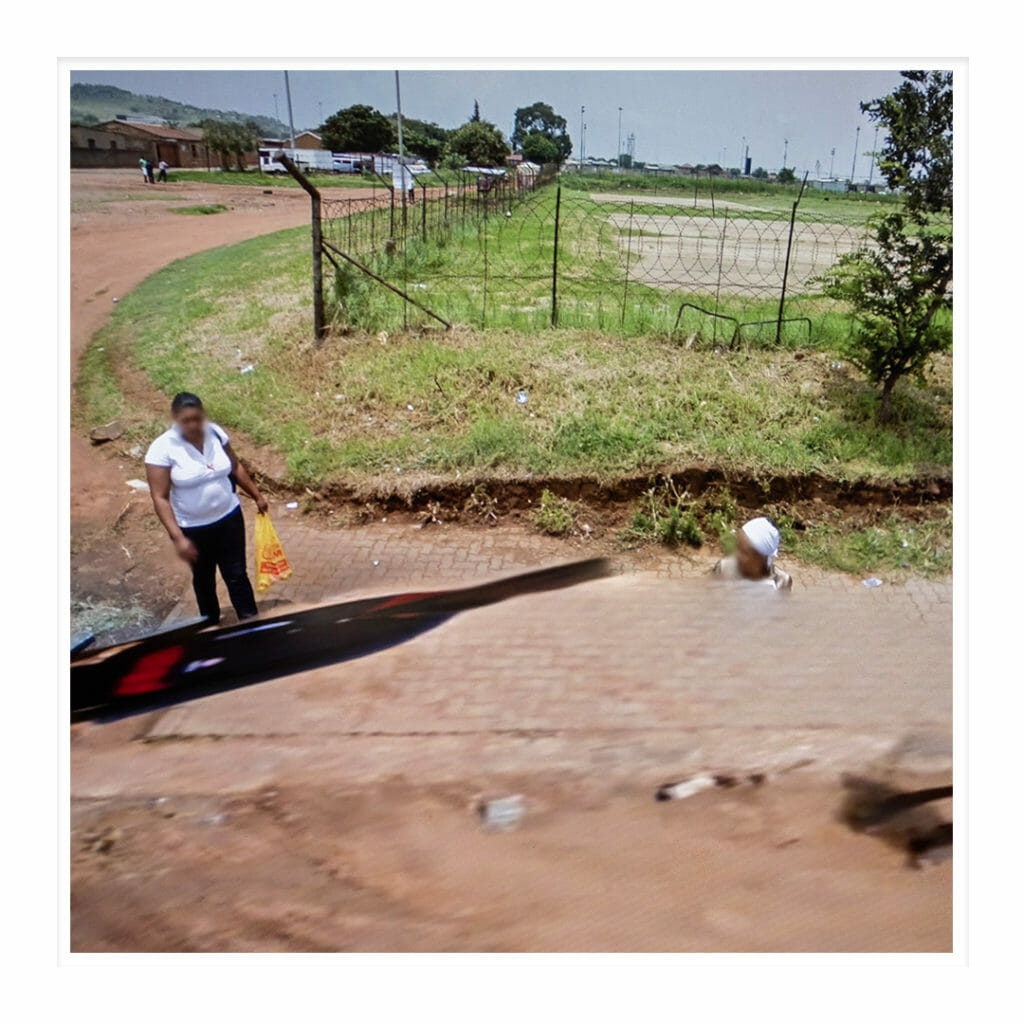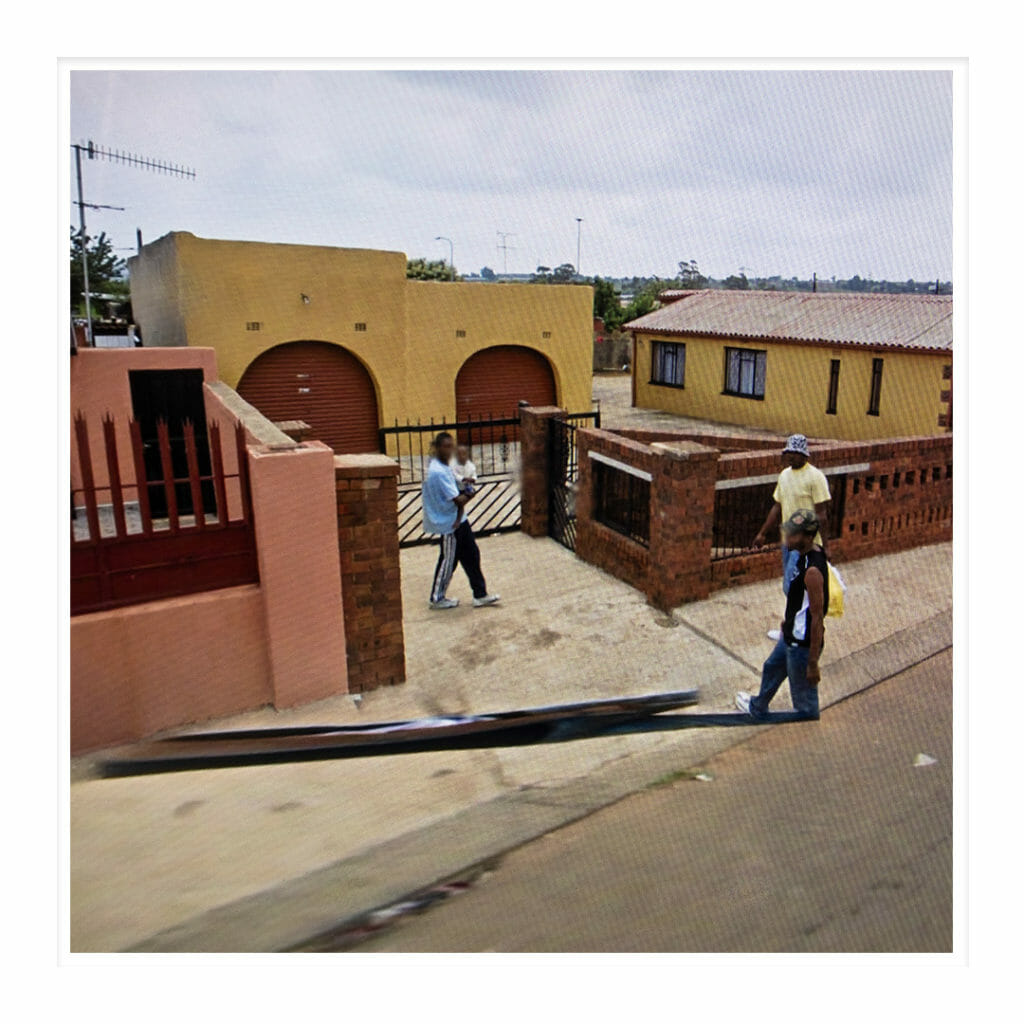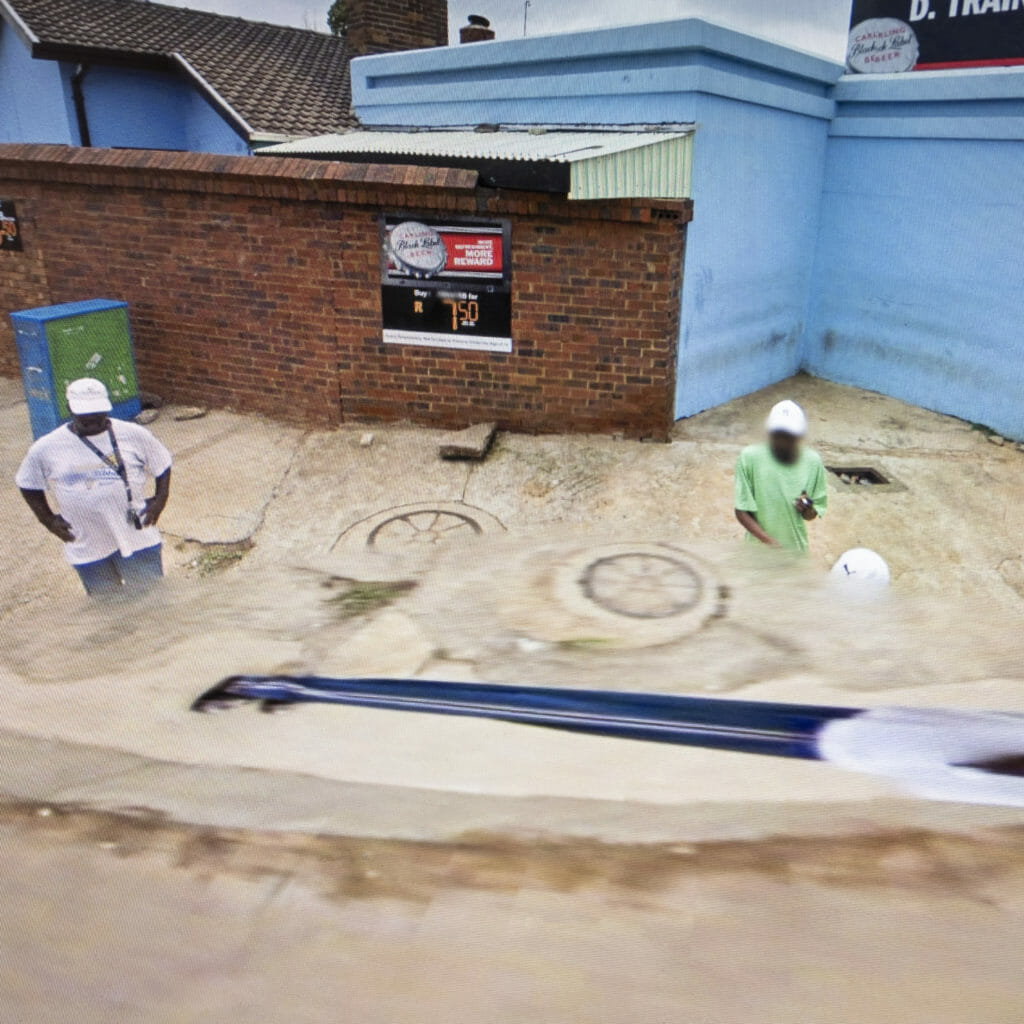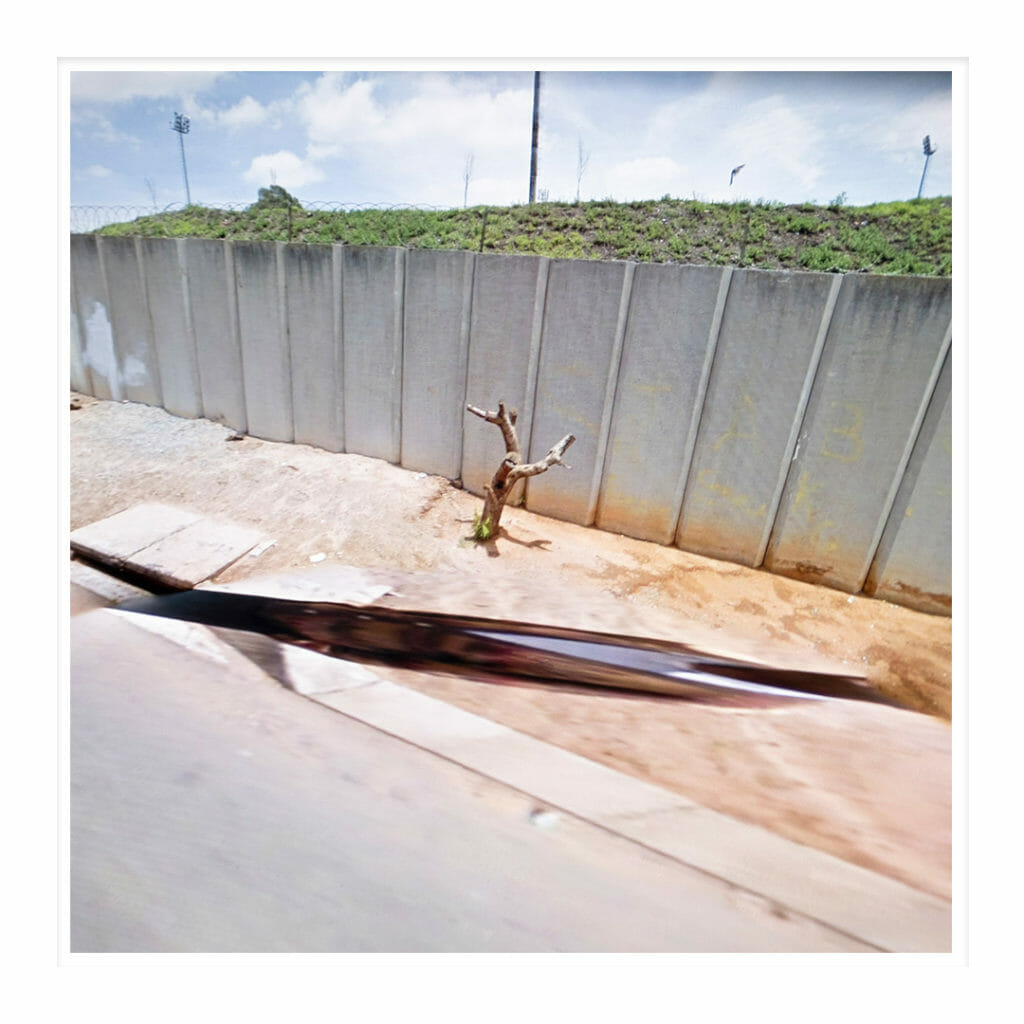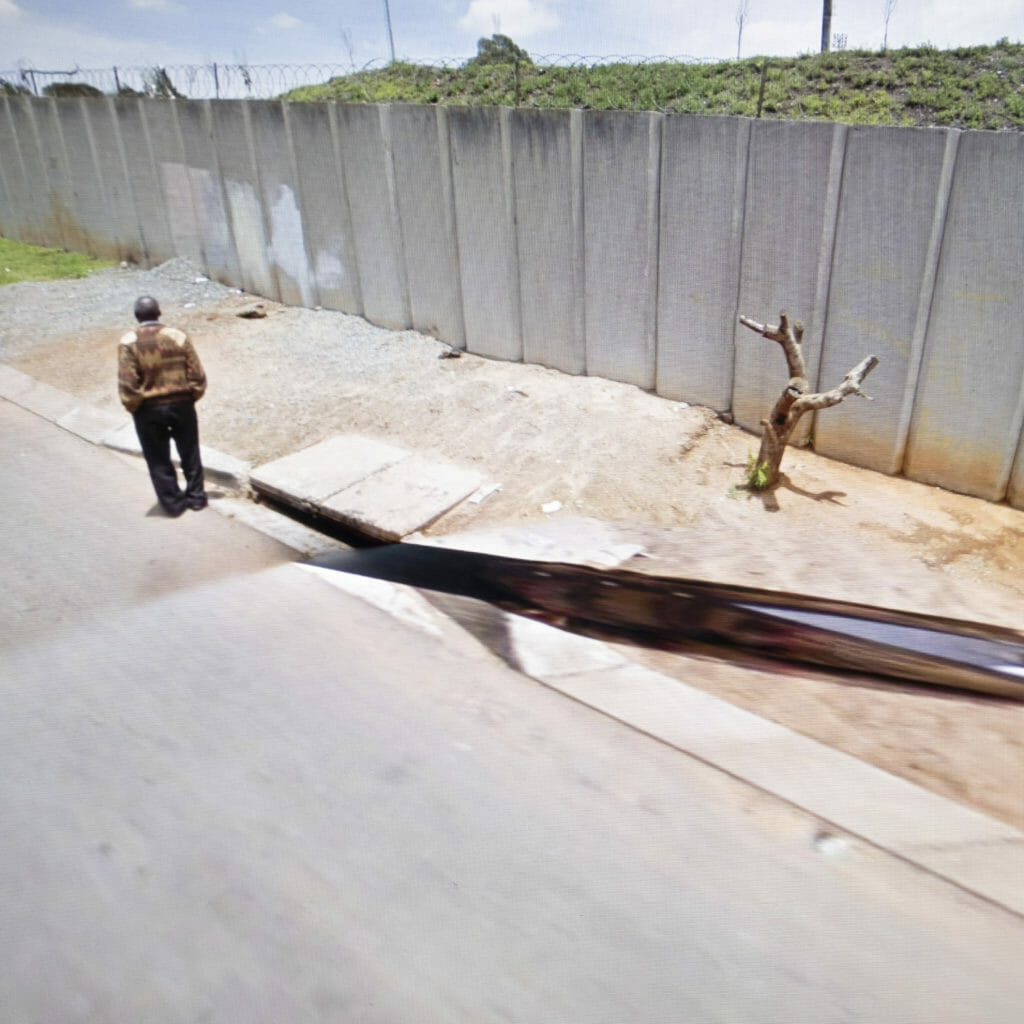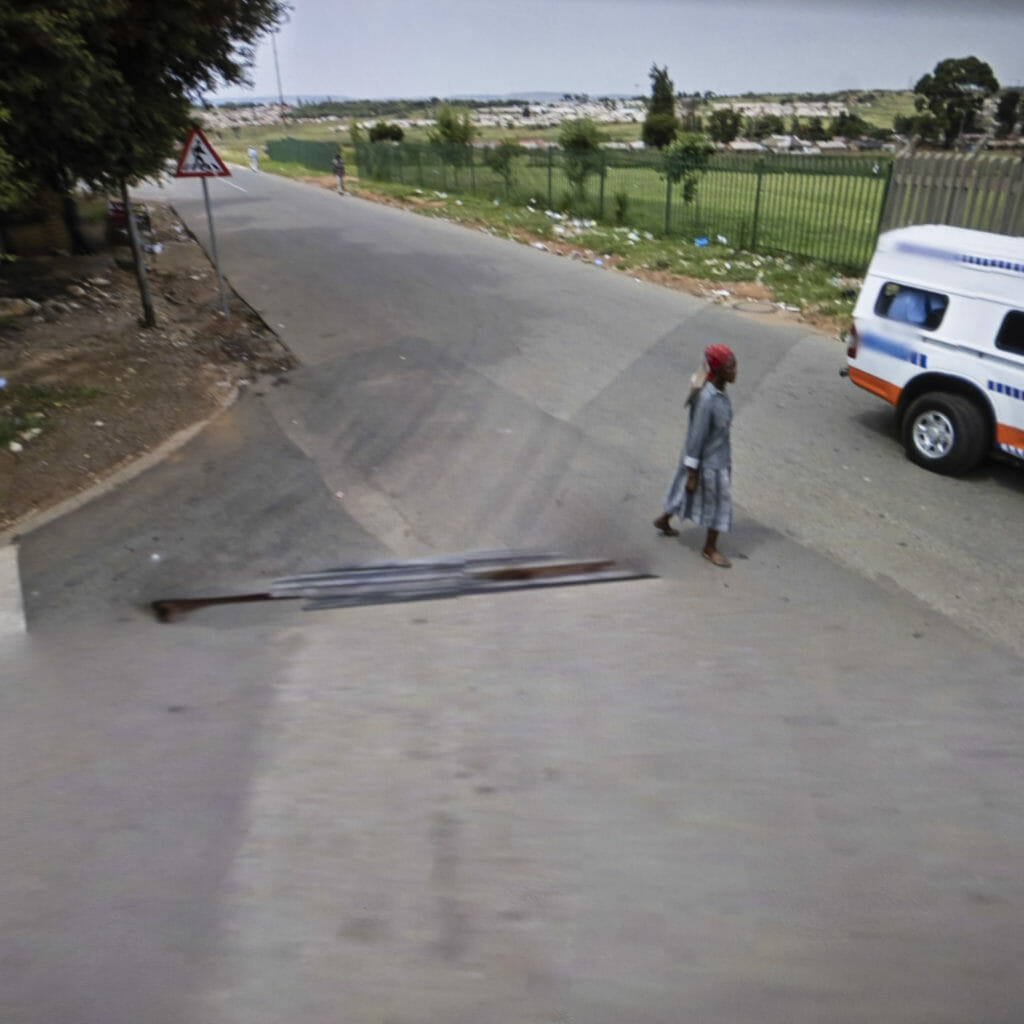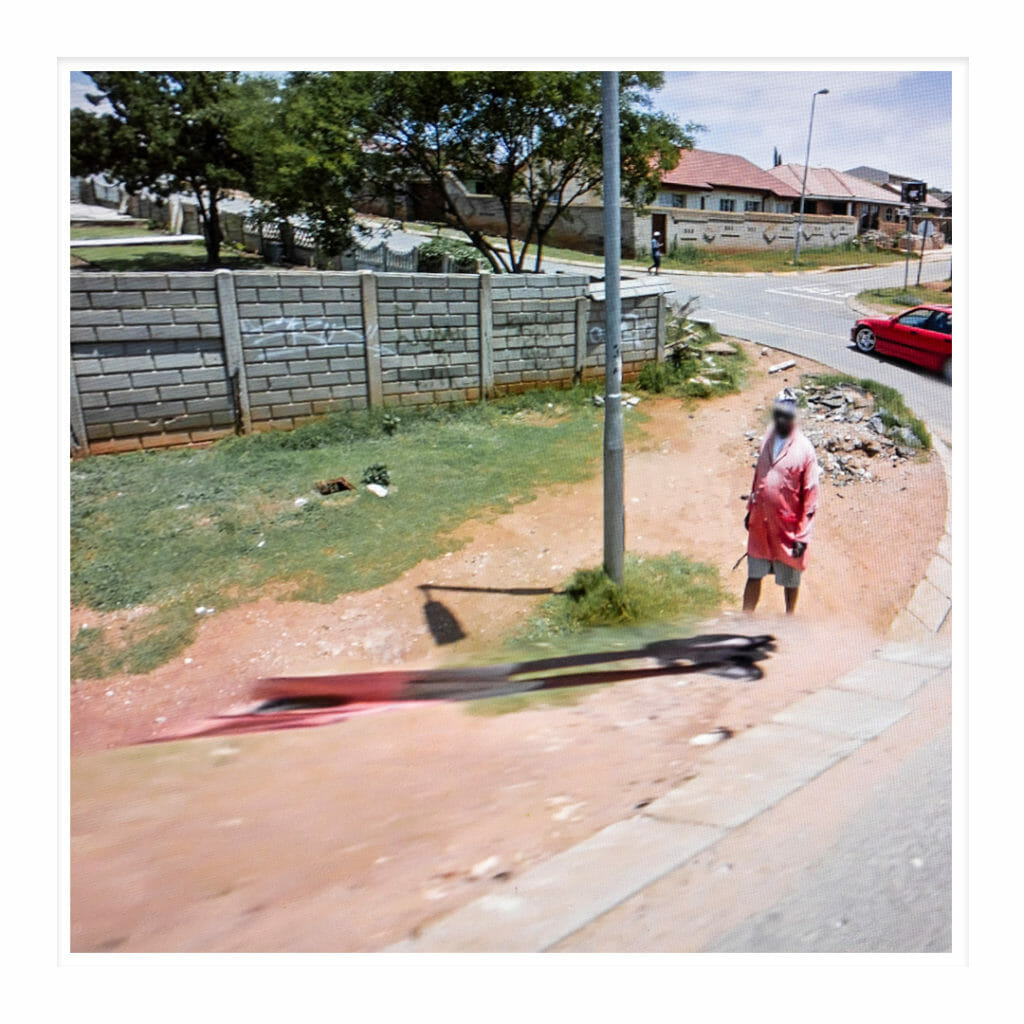“The only territory that exists is the one you occupy.”
With this clue, Mame-Diarra Niang opens up her universe to us. The artist travels through a utopian world, without delimited borders, where nationalities and flags are irrelevant and where people have free movement. When approaching this place, the artist recognizes her spaces and circumscribes her own beacons. The camera is her cartographic instrument, her feelings are her compass and at each click her boundaries are demarcated.
Through her framings, Niang projects her individuality and creates her sites. This modular characteristic of space, which the artist herself conceptualizes as the “plasticity of the territory” can also be understood as an affirmation of her identity in a constant process of metamorphosis.
The artist takes us on her somewhat intimate, somewhat sensorial journey, like a mirror that looks inward and reflects environments arranged in two series: The Citadel: a trilogy (Sahel Gris, At The Wall and Metropolis) and Call me when you get there.
In the trilogy (which is in the gallery’s main room), the artist traveled through three regions familiar to her, in different situations in her life. When exposing the concepts of each series, she came across her strength which, having been defined by herself, is the place where she feels safe. From an area under construction or in destruction, Sahel Gris is born. While wandering through this unidentifiable area, the artist traced her horizon and recorded her arid surroundings. Even apparently abandoned or inhospitable, it is the place occupied by Niang. That’s where she finds herself in that moment and where she finally meets her limit.
At the wall delimits Niang’s steps. She faces all walls, through different angles, and, without paralyzing herself, builds her confines. Images of her give us the feeling that she crossed her barrier by being in constant movement, generating irregular frames. What was needed was to protect himself in his fortress.
With its limited space, we enter Metropolis, the last part of the trilogy that makes up the citadel of Mame-Diarra Niang. We find ourselves in a dense urban center of saturated colors and in the midst of enormous structures that are apparently impenetrable, but where we perceive open windows, passers-by, reflections and traces of life. It is here that Niang raises her camera’s viewfinder and aims at the highest place in her territory, as if now she could finally see more clearly. On this path guided by the artist’s narrative, it is possible to perceive her silences, her sensations, her held breath, her encounters and disagreements and, above all, her need for self-representation.
It is this same motivation to externalize her feelings through landscapes that led the artist to create the series Call me when you get there. Last year, due to the Covid-19 pandemic, France, the country where the artist lives, imposed strict social distancing measures requiring long periods of confinement. Faced with the deprivation of displacement, Niang found in Google Maps a way to continue her artistic practice. She sought out images of places that were familiar to her and that reflected her state of mind. The result of this inner journey translates into screenshots of places where people seem to be fading away. With incomplete bodies or with only traces and shadows of their presence, the inhabitants of this specific location had their records distinct from other routes explored by the artist. And it was exactly in this territory that Niang came across the translation of how she felt.
When displaced from the purposes for which they were generated, the scenes gain new meanings and are capable of giving rise to identifications on the part of the spectator. This investigation by the artist became a series that approaches self-portraits of her experiences during confinement. Her emotions are also reflected in the choices of presentation of her work: square images, printed in small formats, with white borders that delimit their spaces and framed in transparent boxes. The work thus reflects a feeling common to those who have experienced the cloistered situations, in an involuntary immersion in their intimacies, within extremely limited surfaces. From the circulation of her own body in the spaces she enters or in the wanderings of her mind in an imaginary world of her own, Mame-Diarra Niang somehow produces her territorial self-portraits.
Mame-Diarra Niang was born in Lyon and raised between Ivory Coast, Senegal and France. She participated in the 33rd Bienal de São Paulo (2018), the 11th Bienal do Mercosul in Porto Alegre (2018) and the 11th and 12th editions of the Bienal de Dakar (2014 and 2016).
– Marcella Marer
